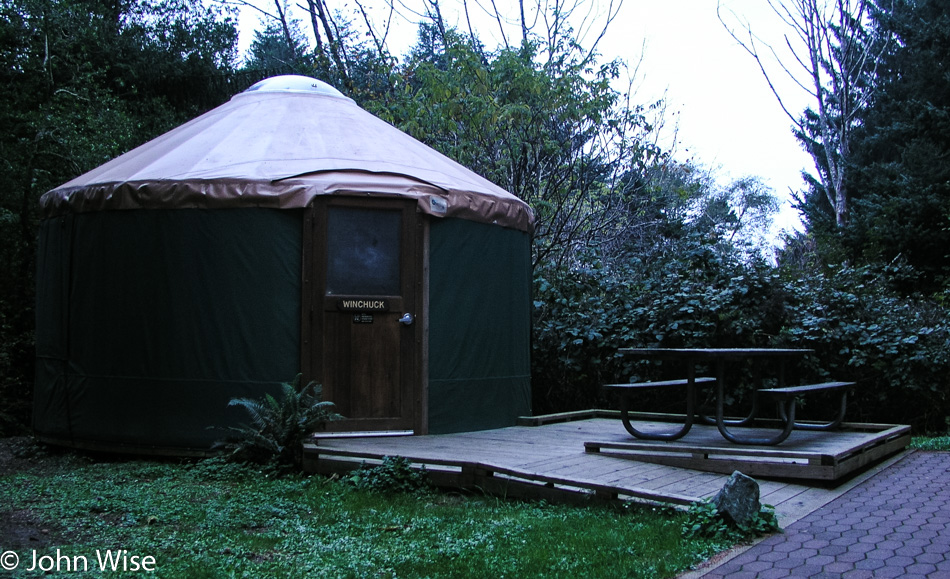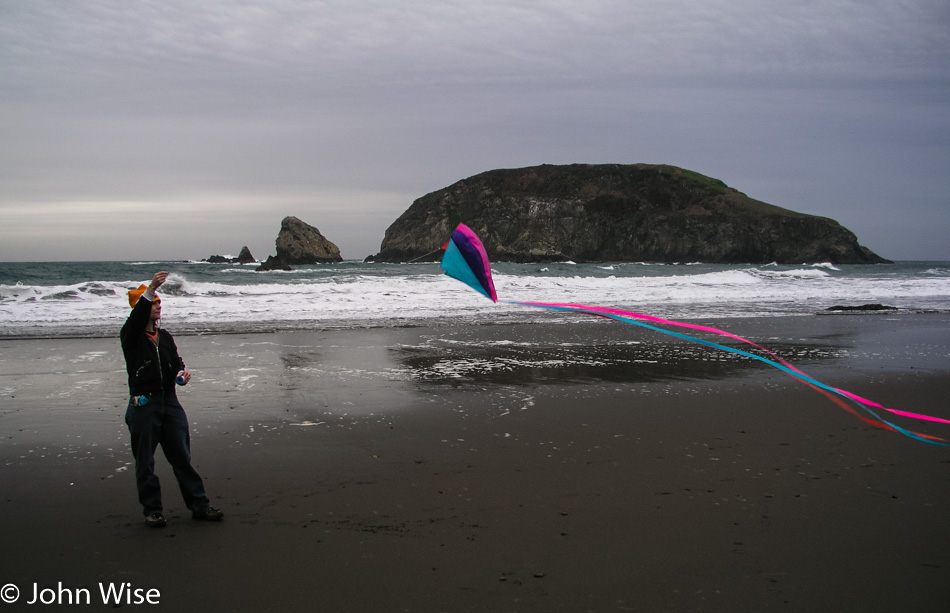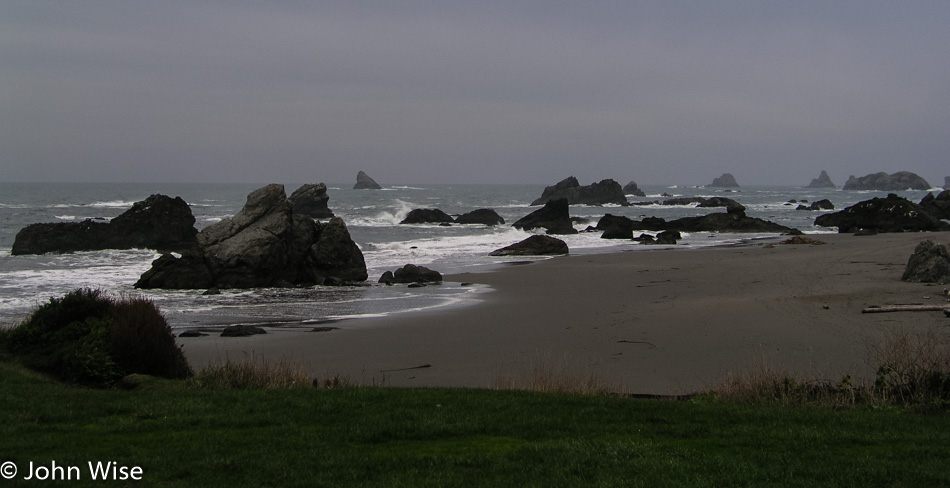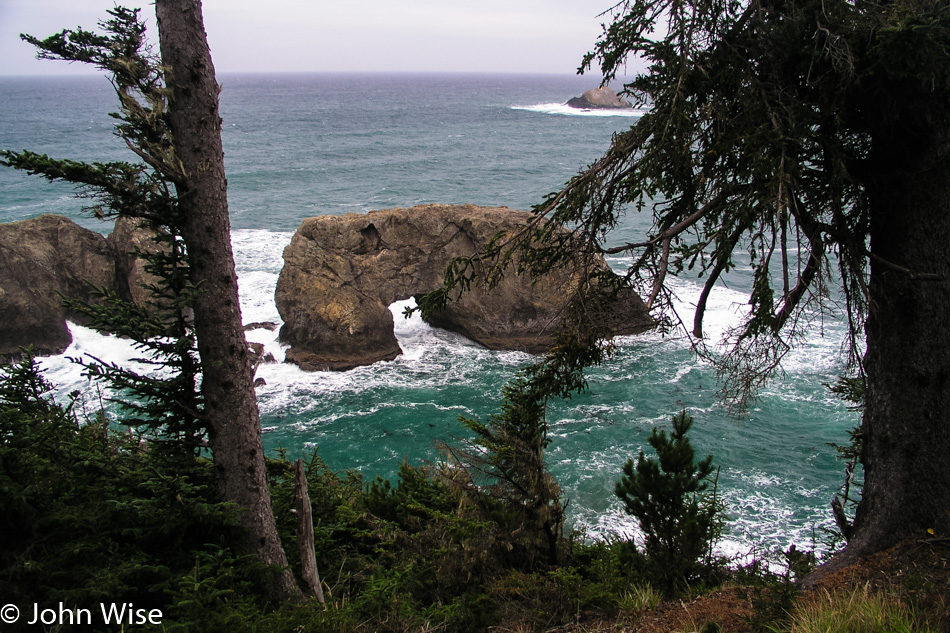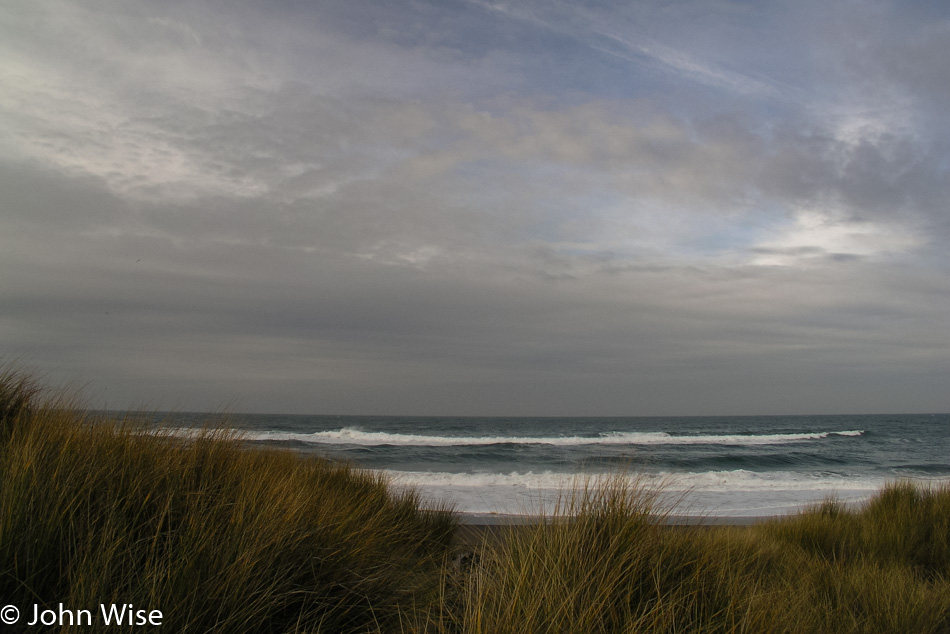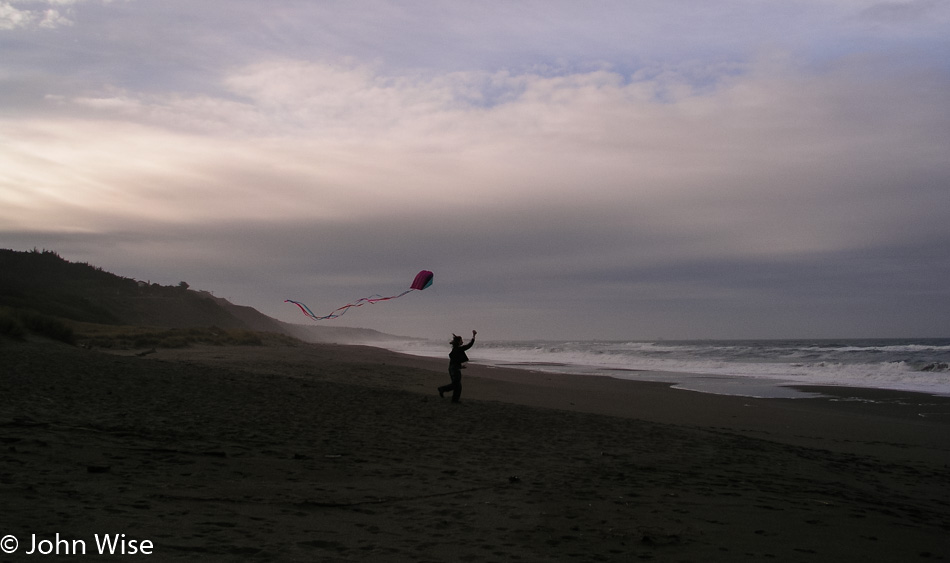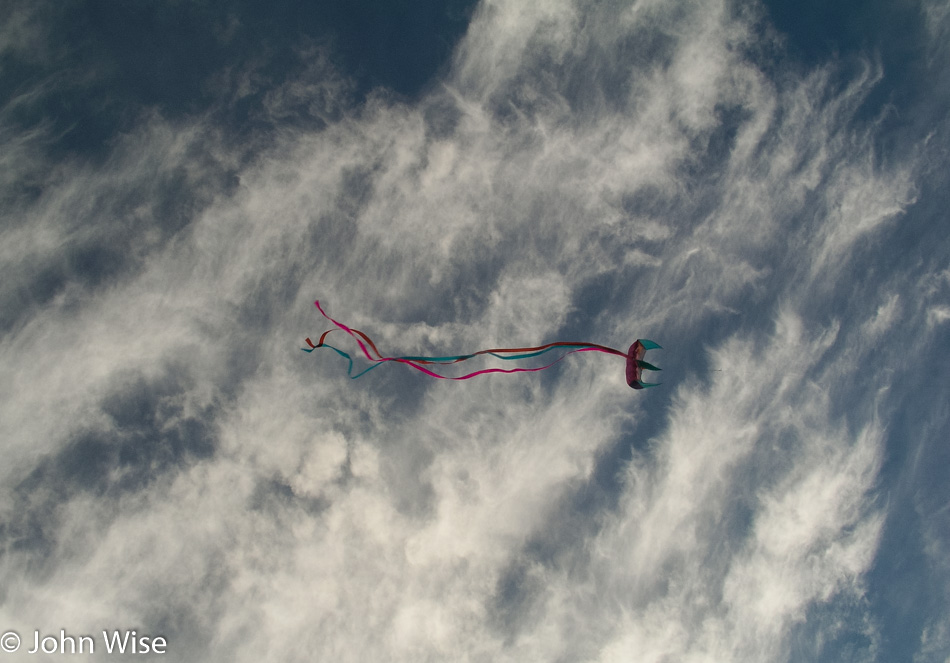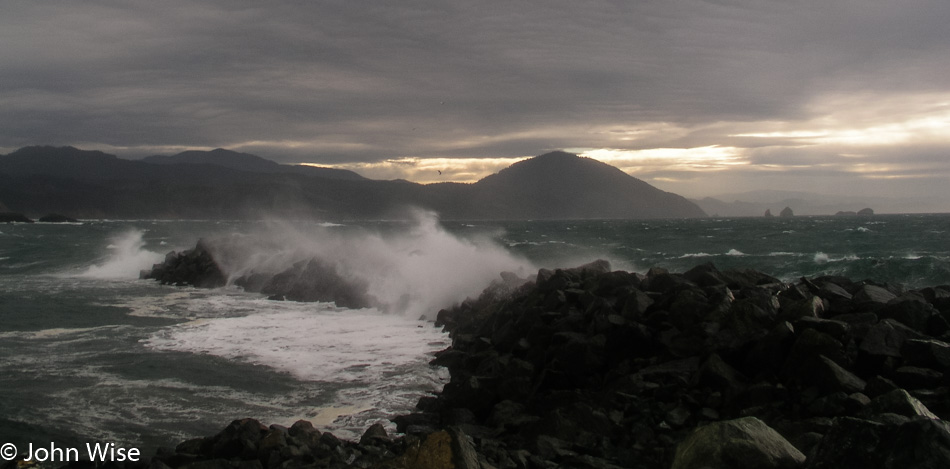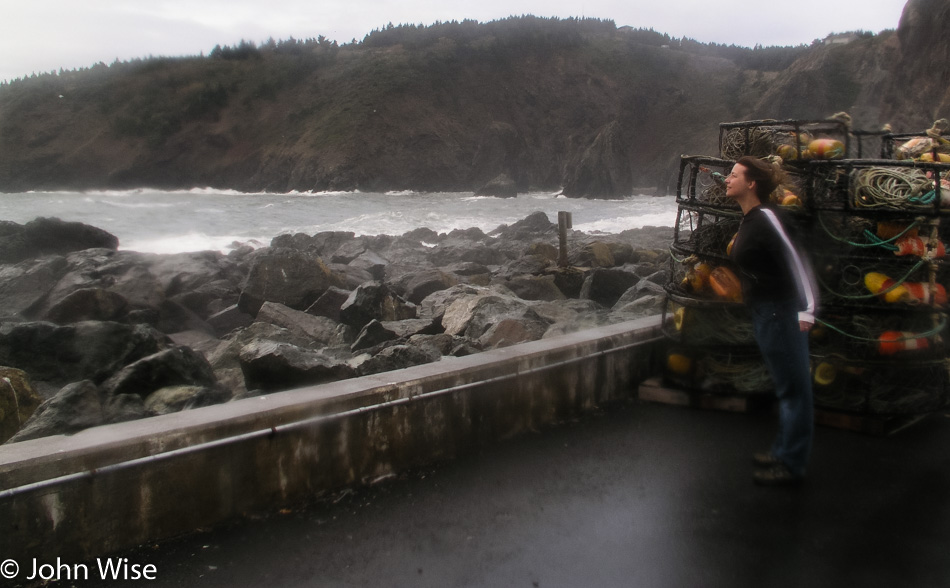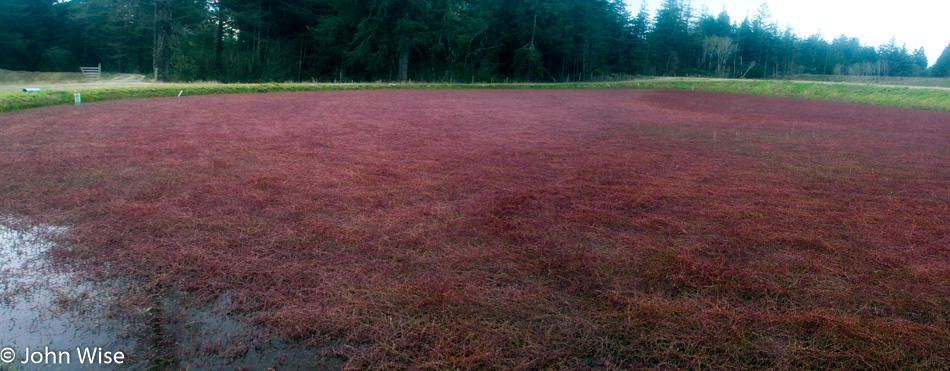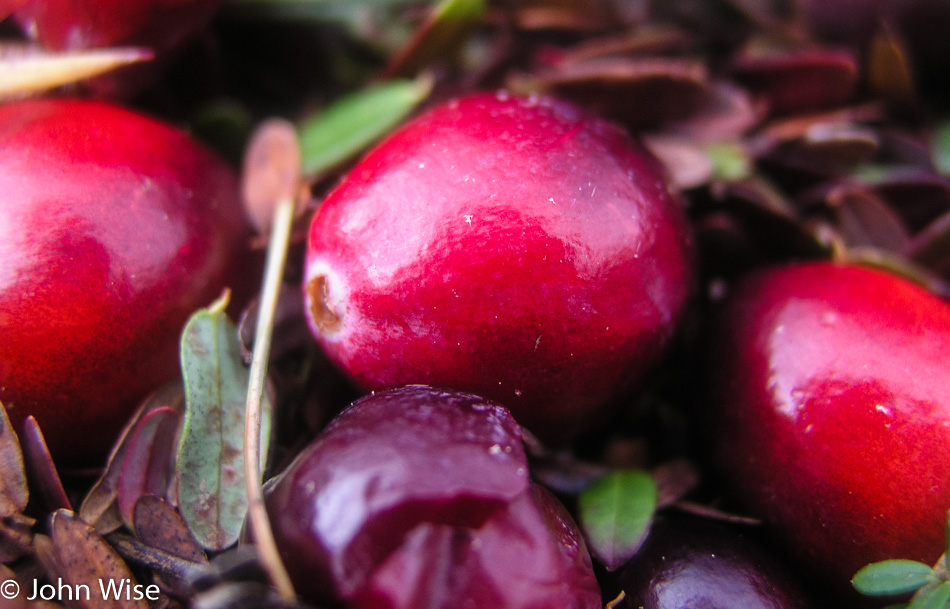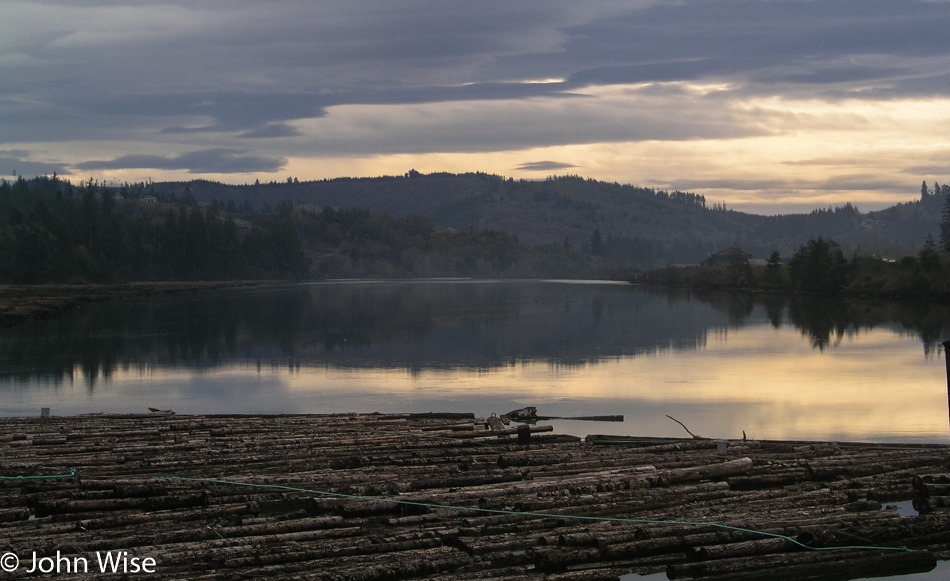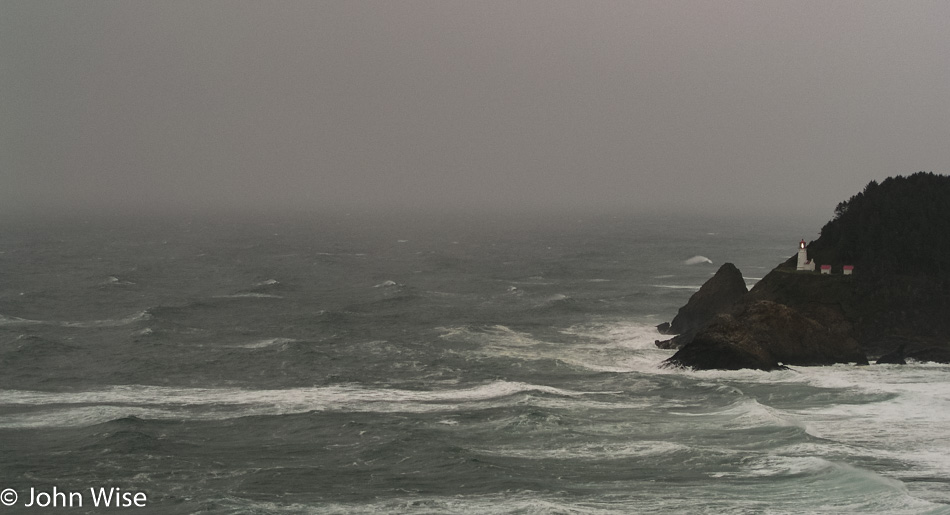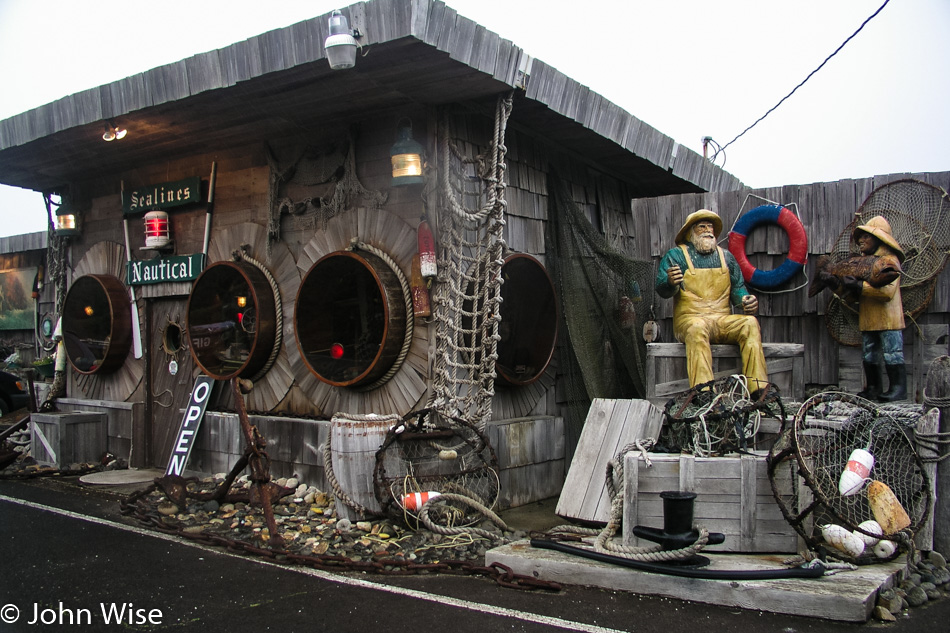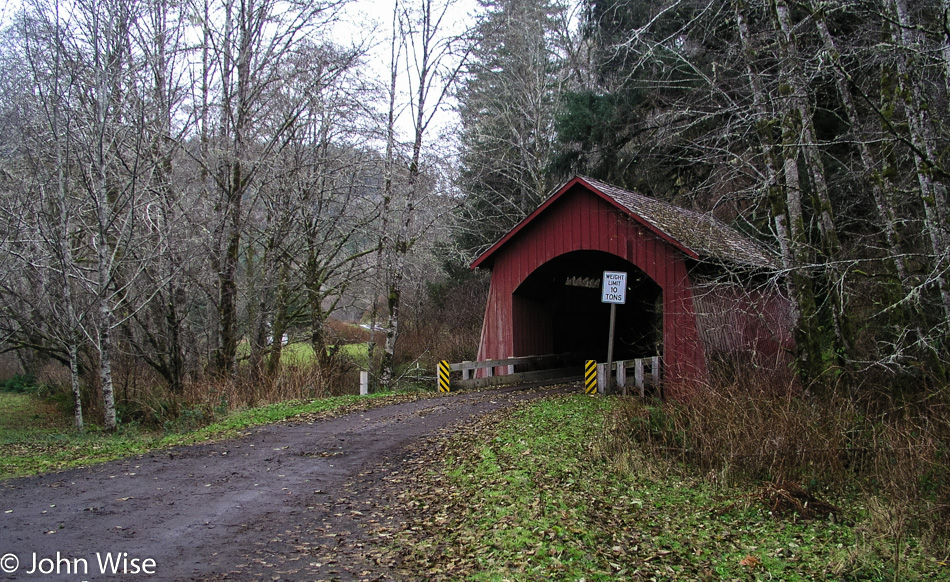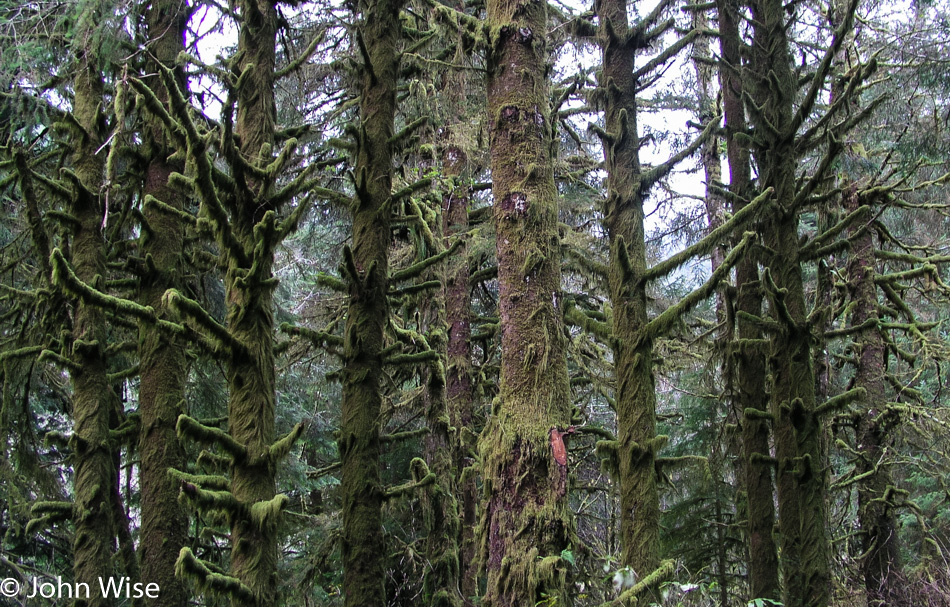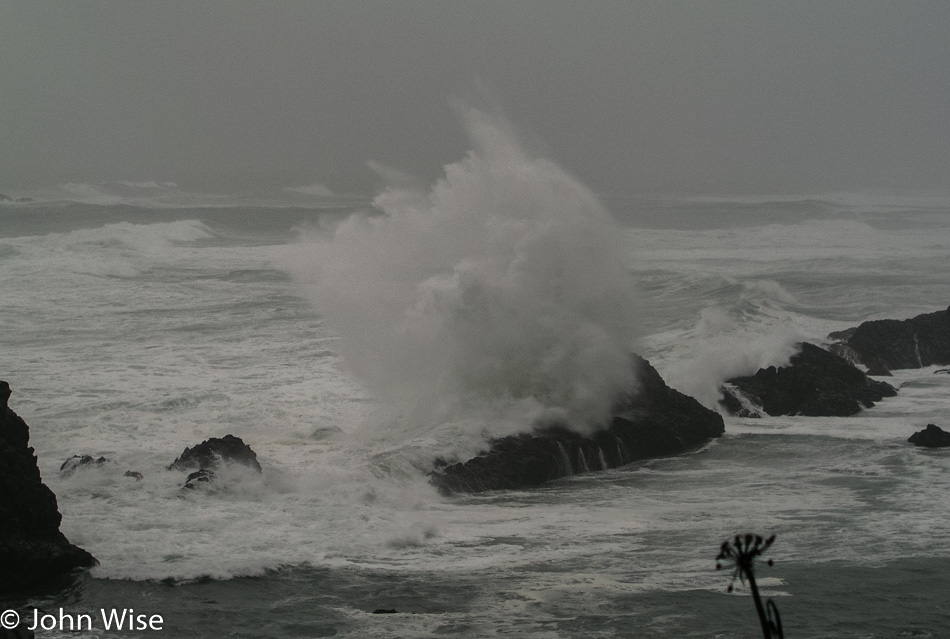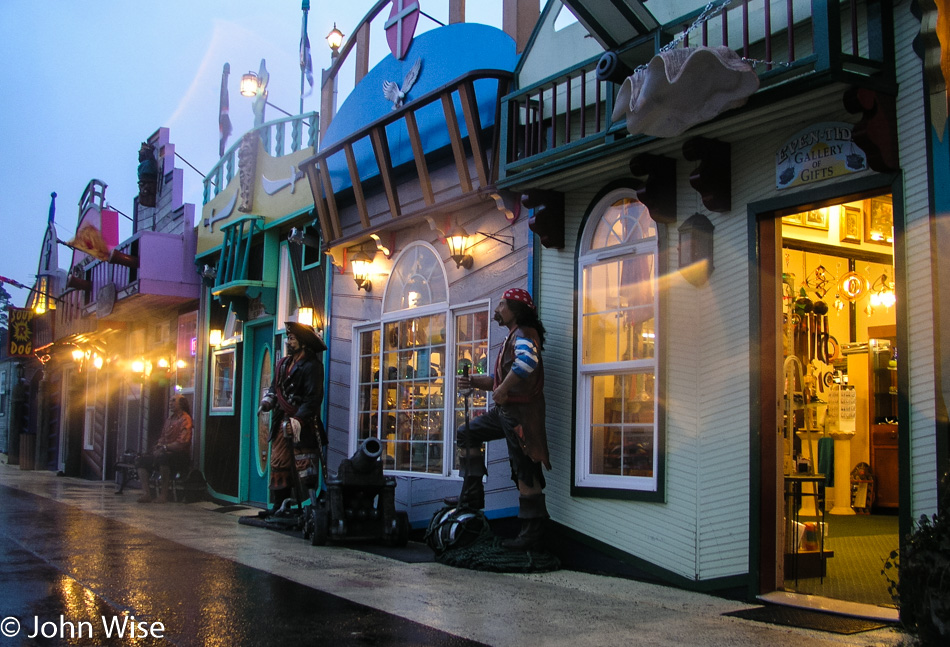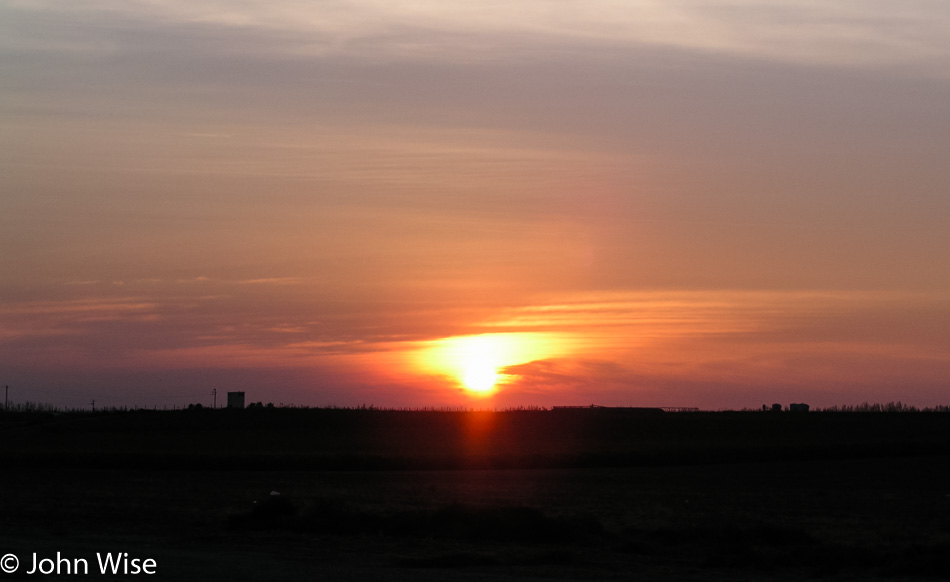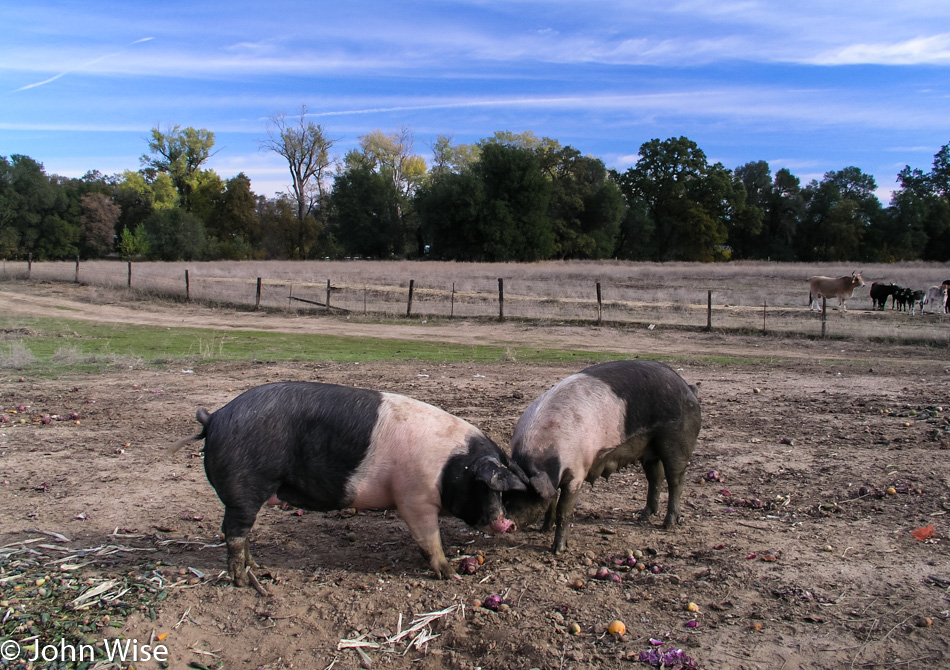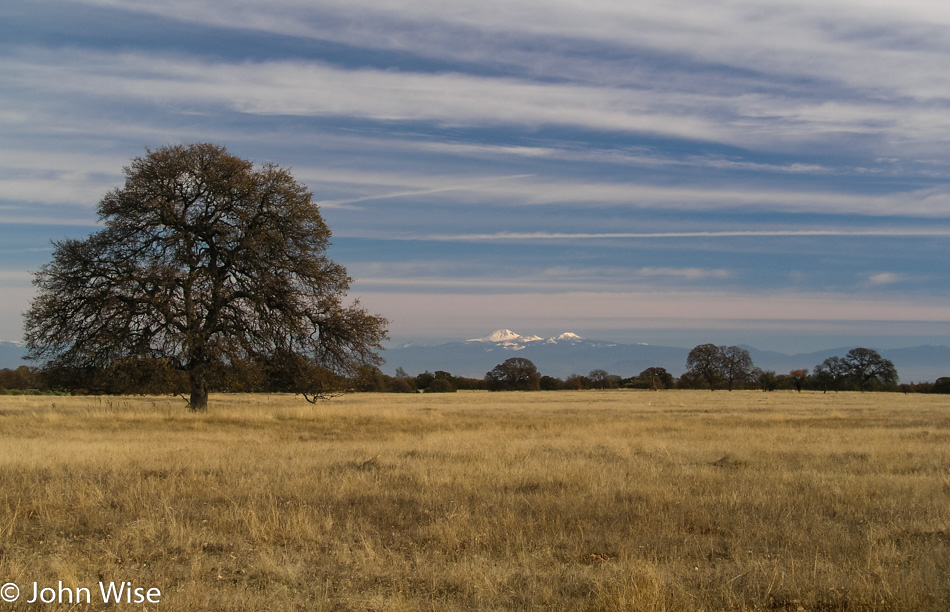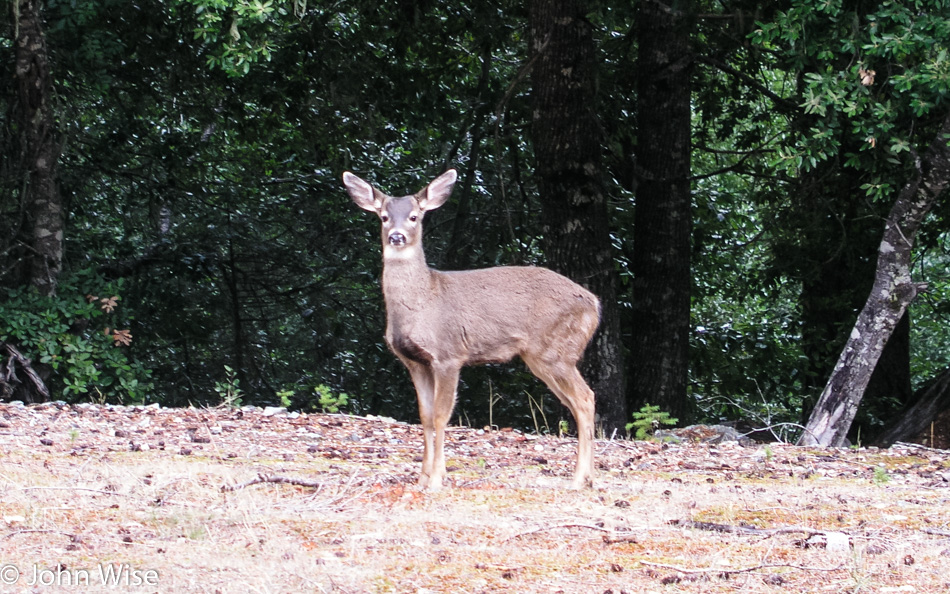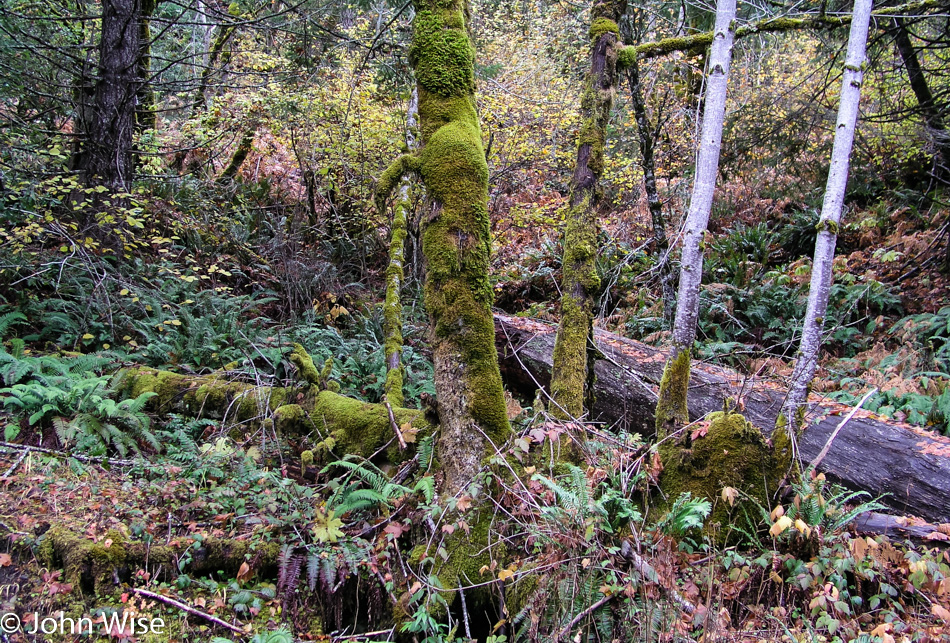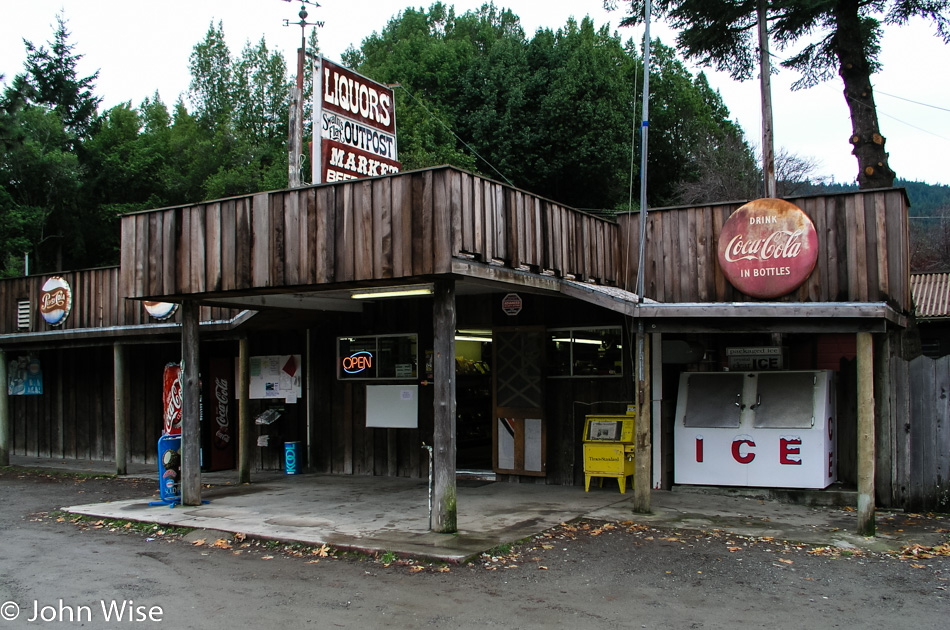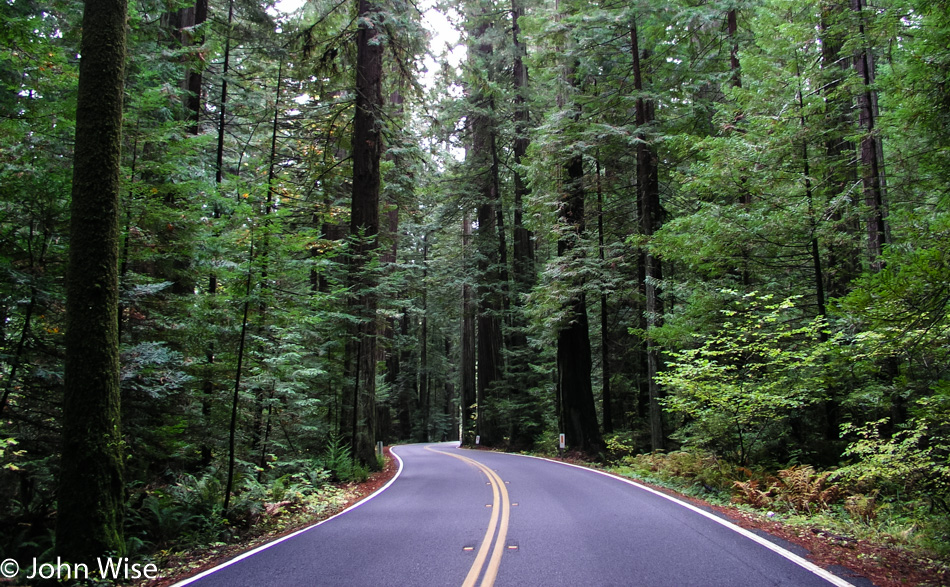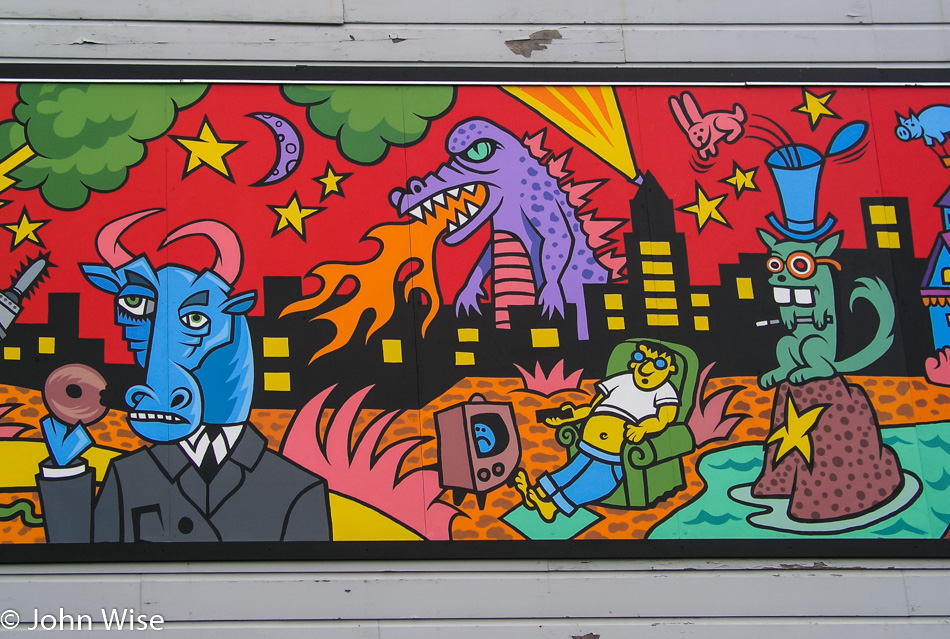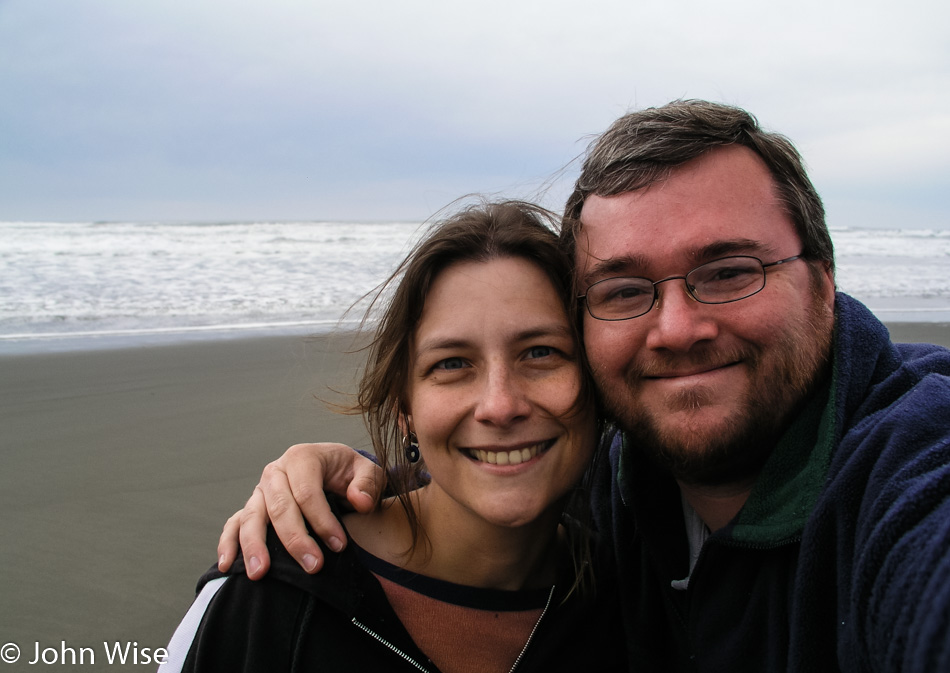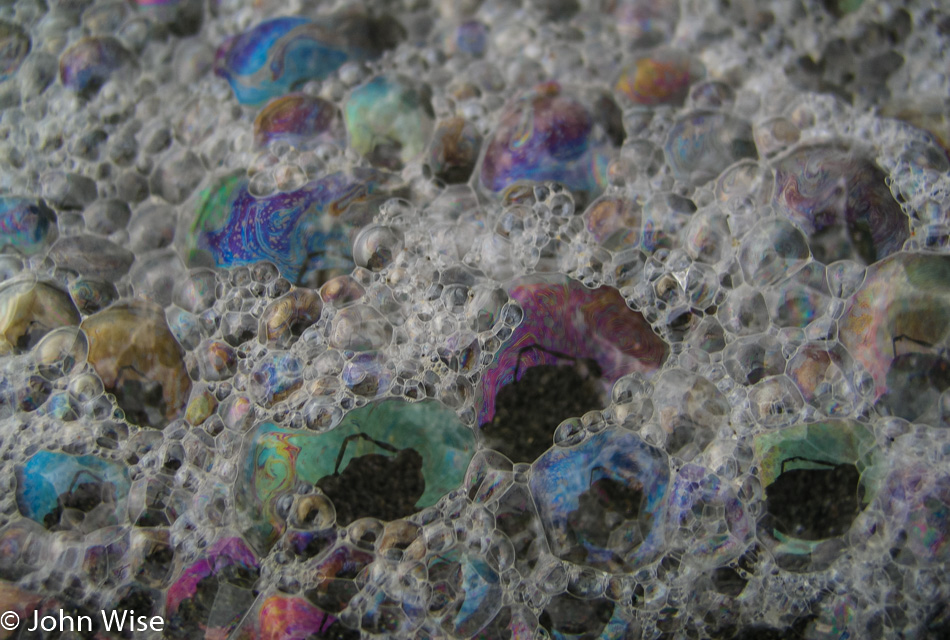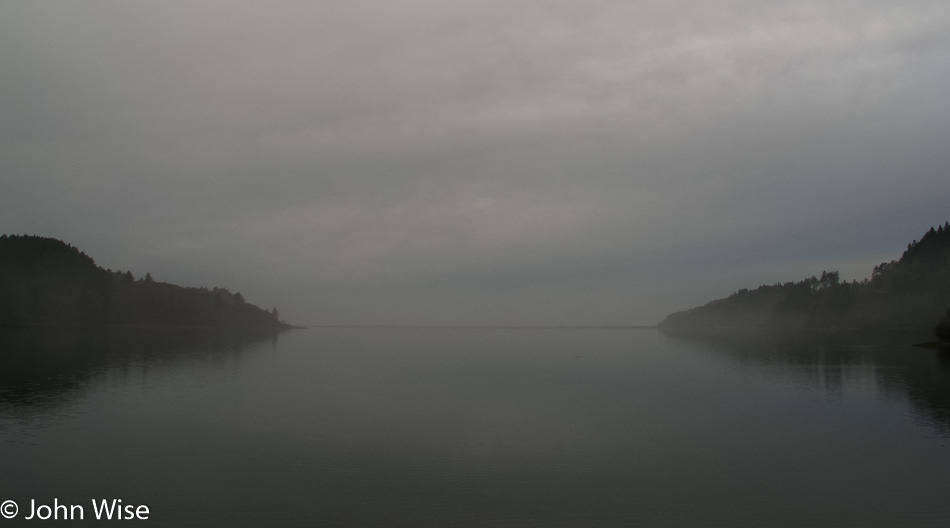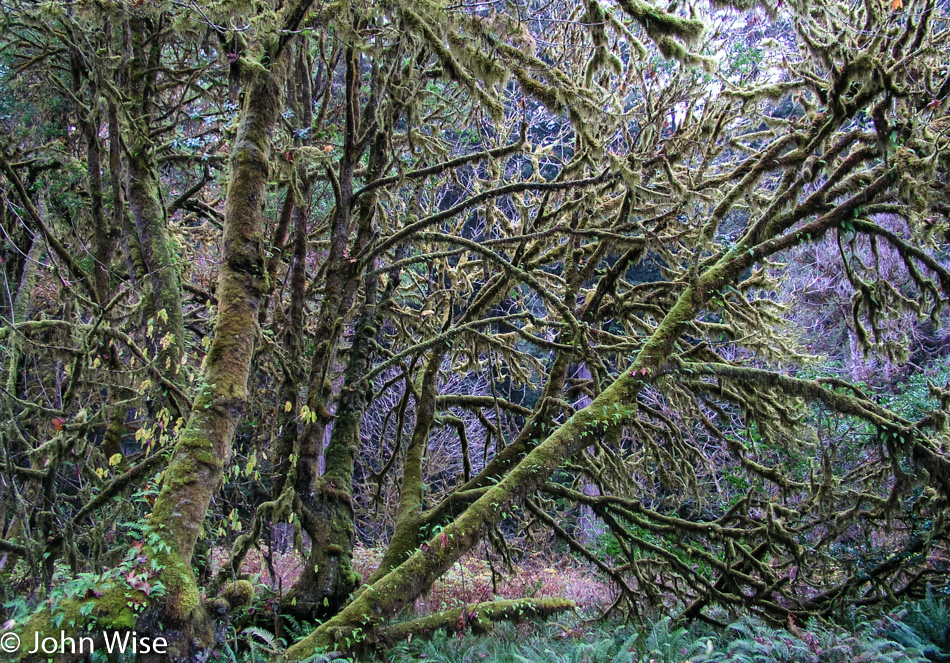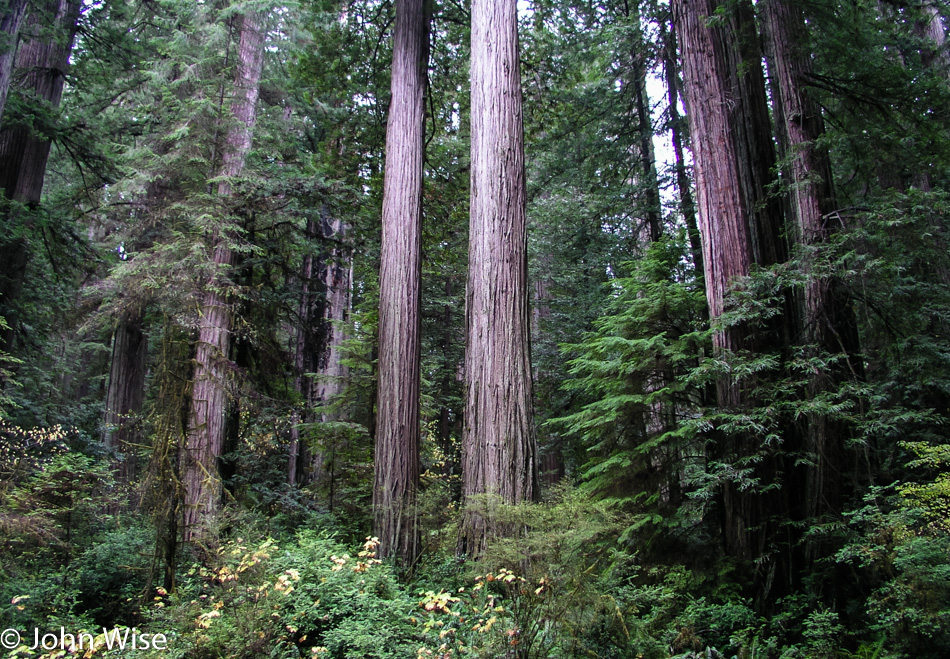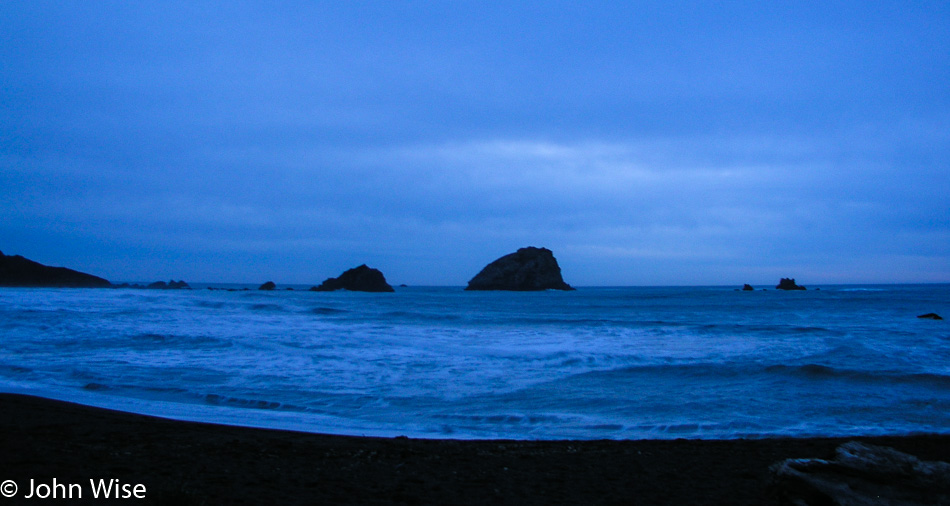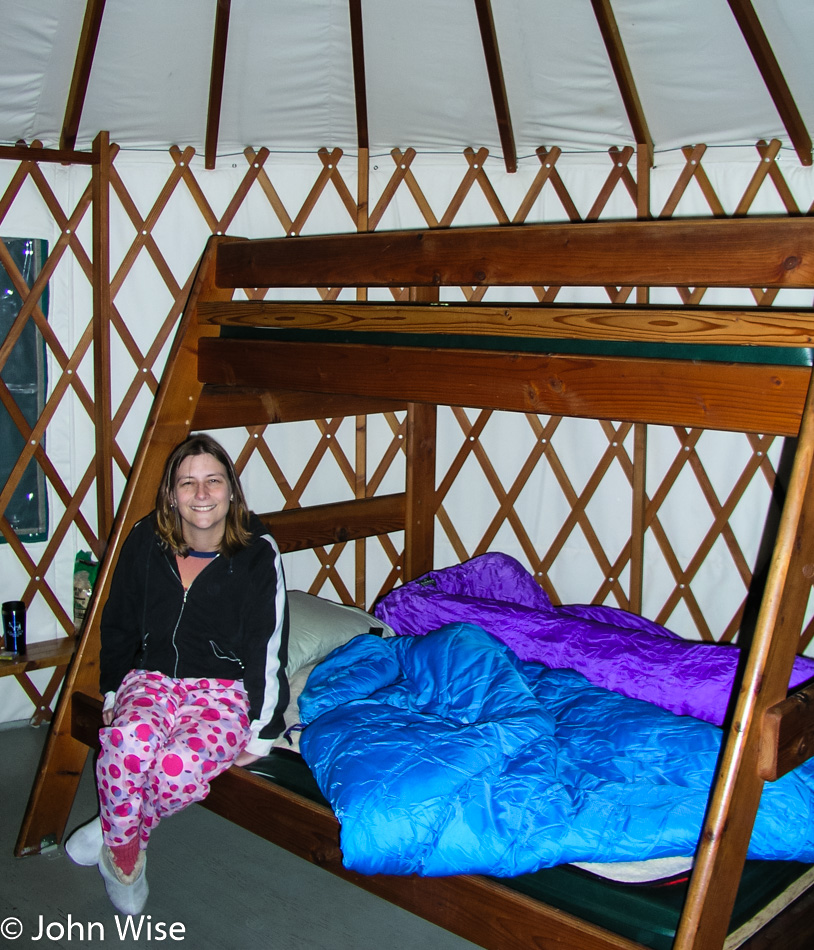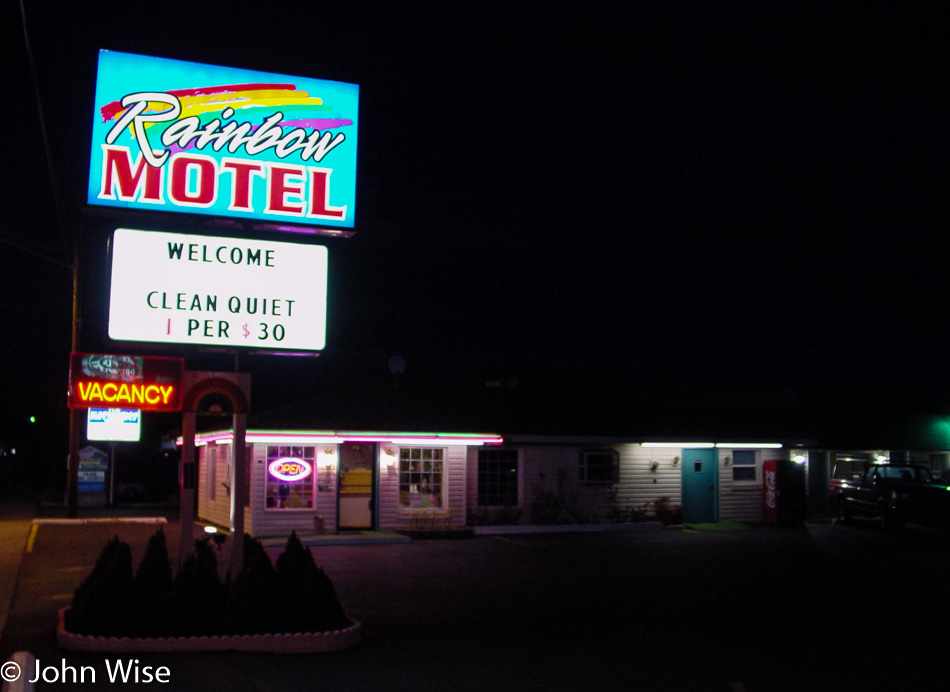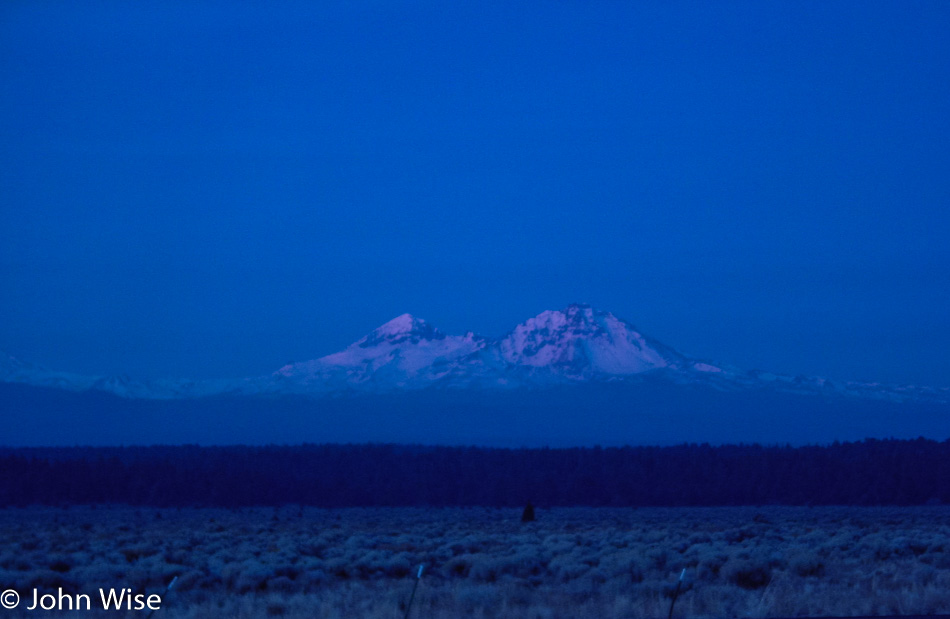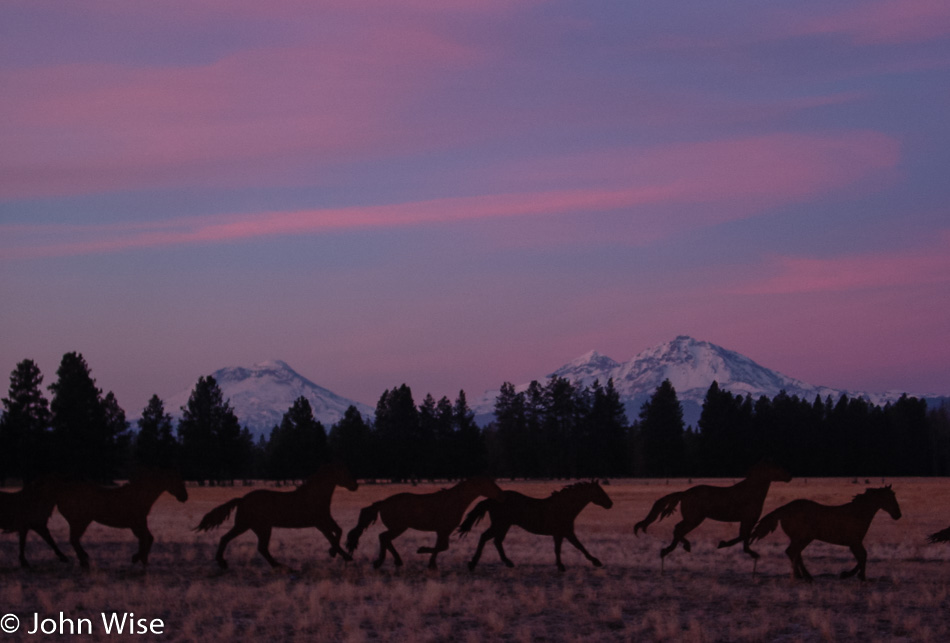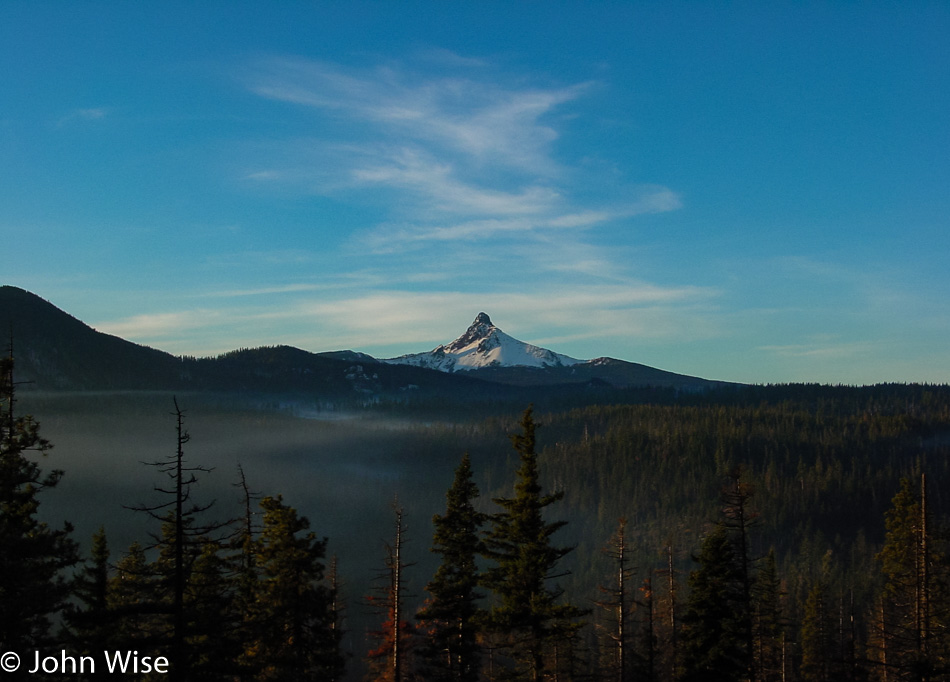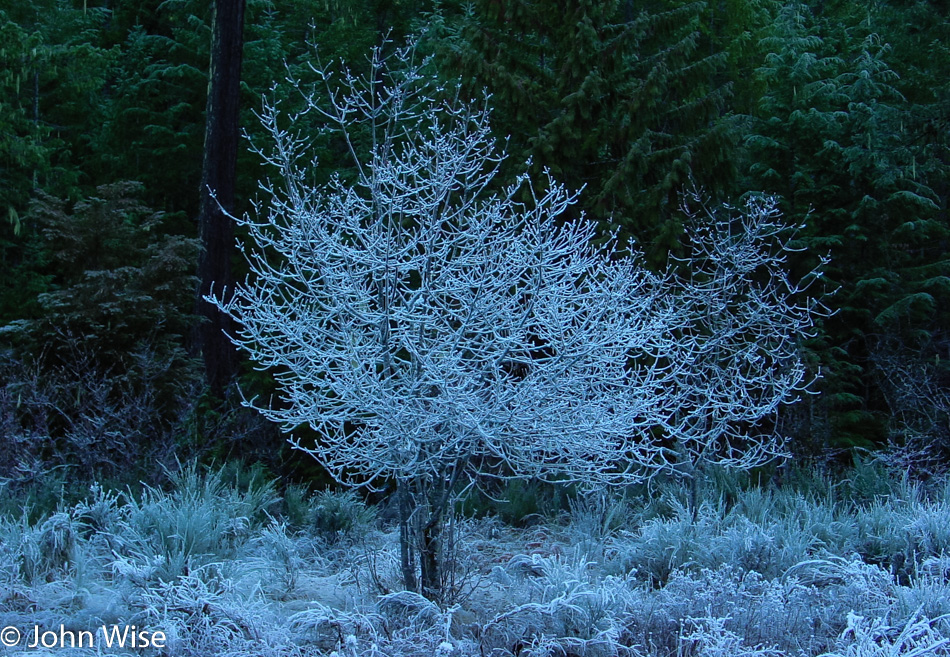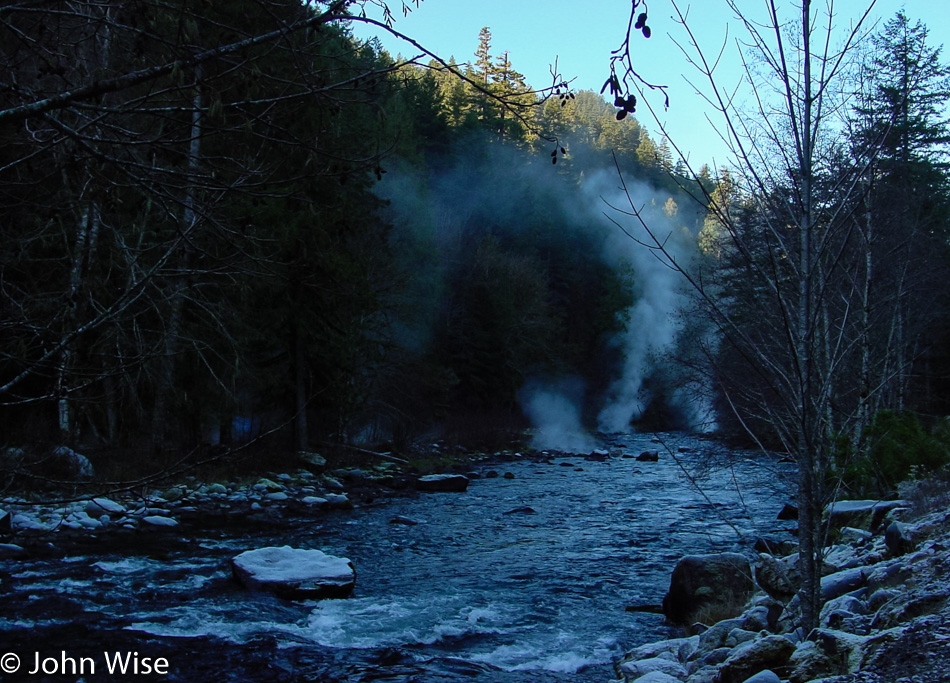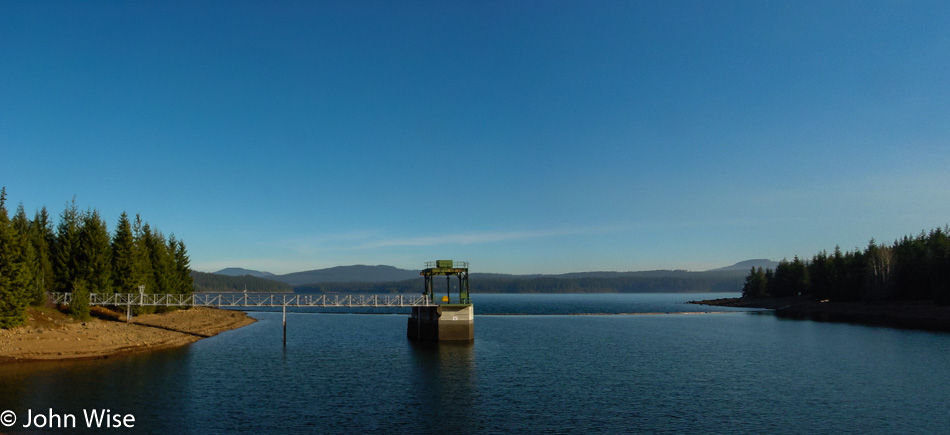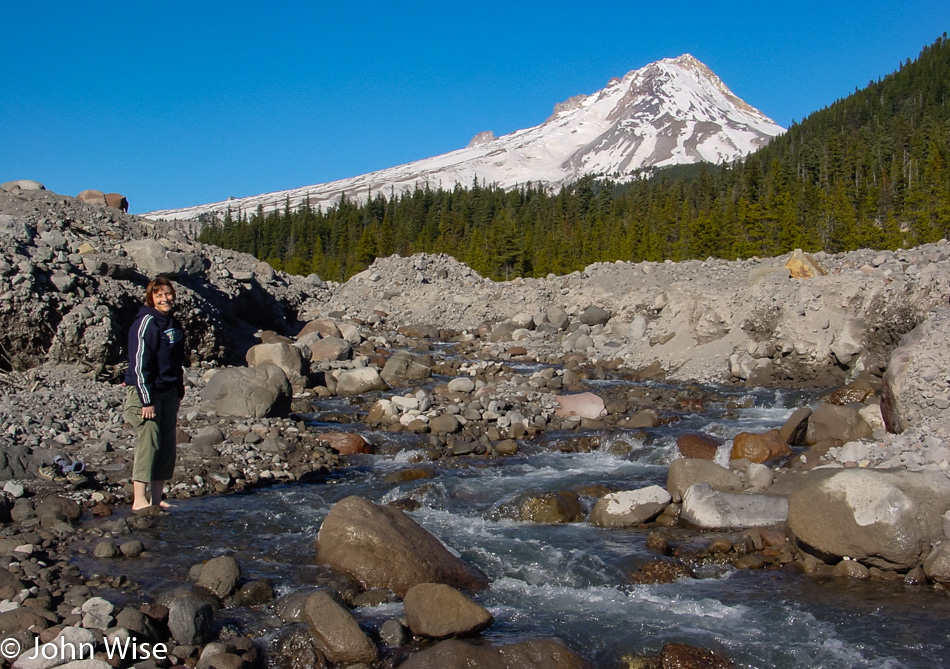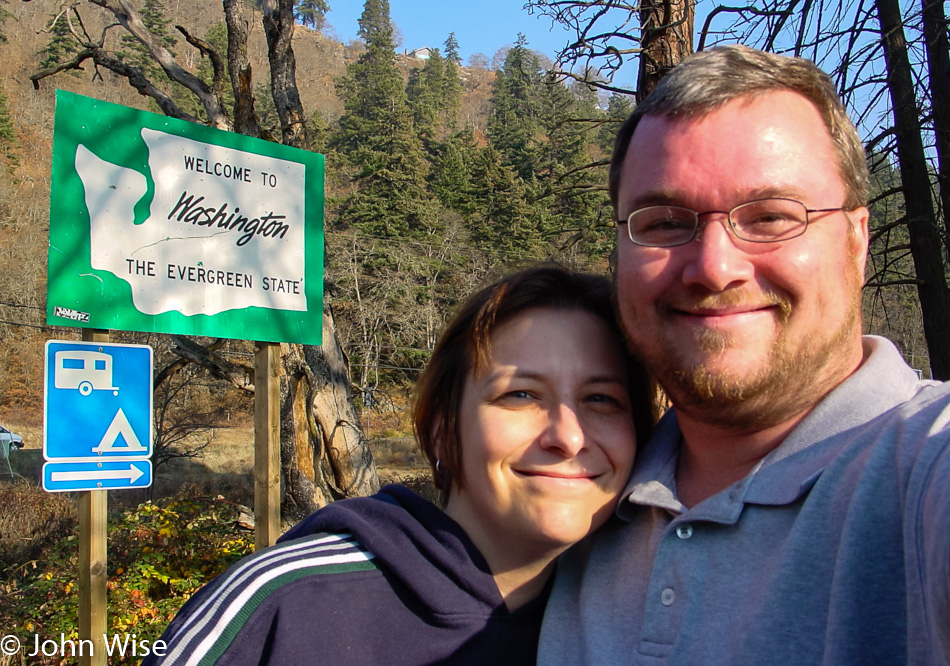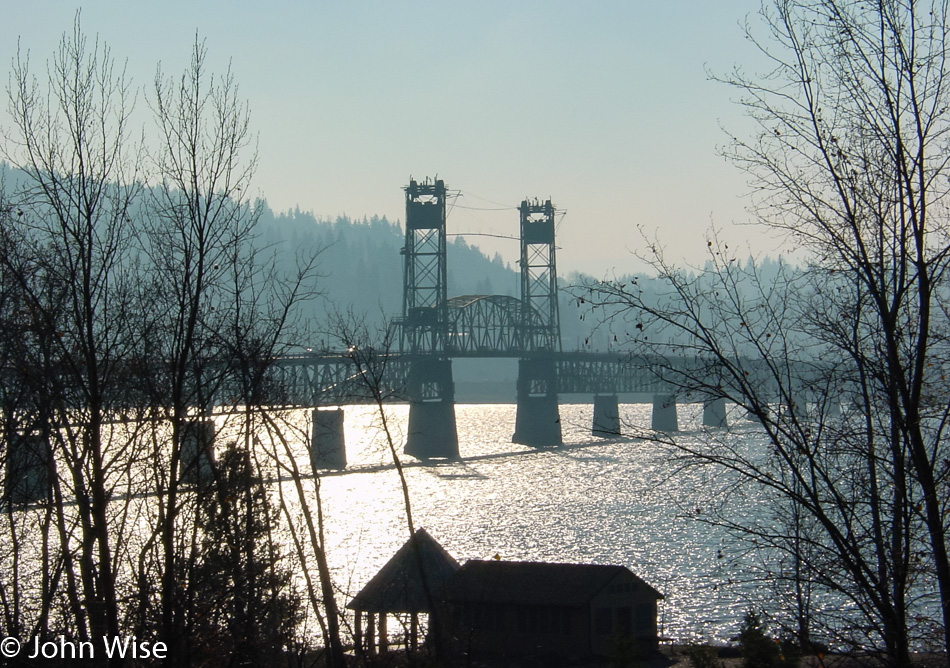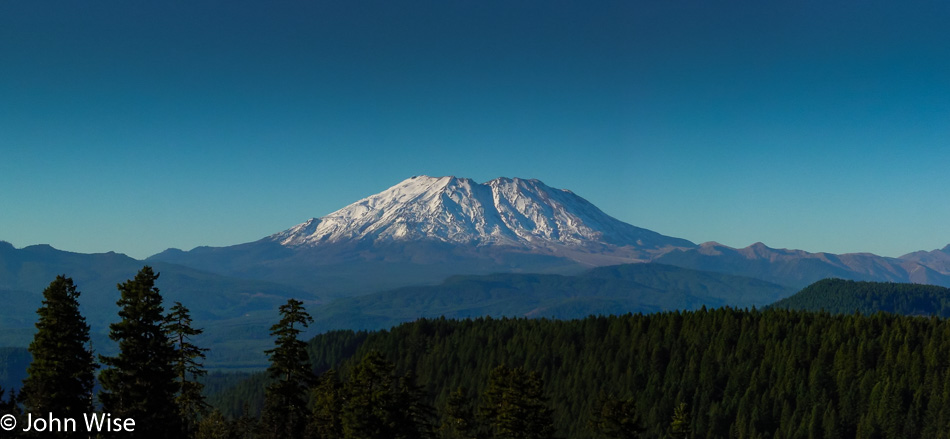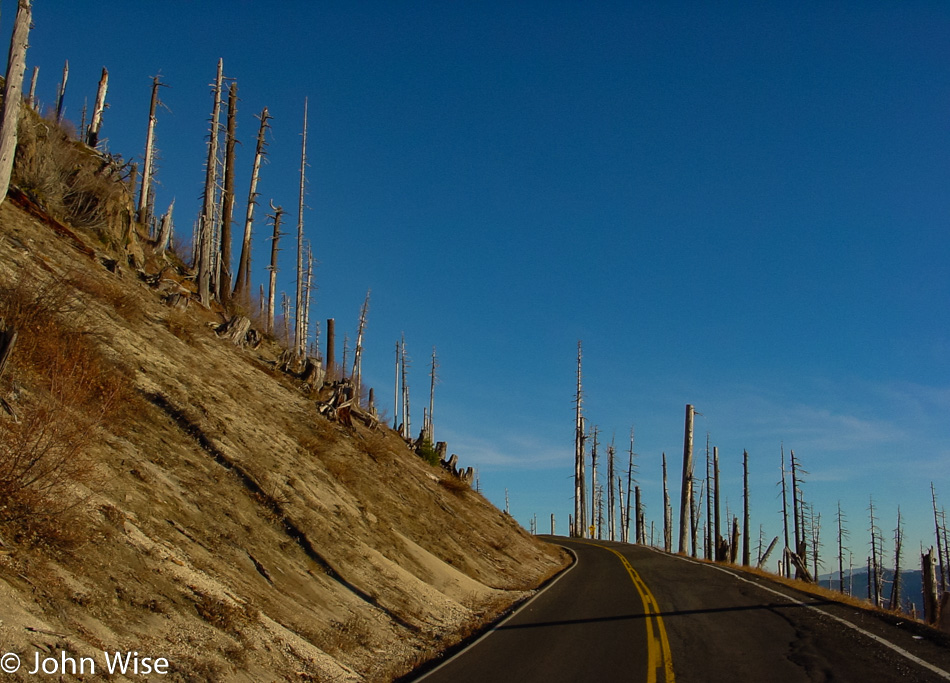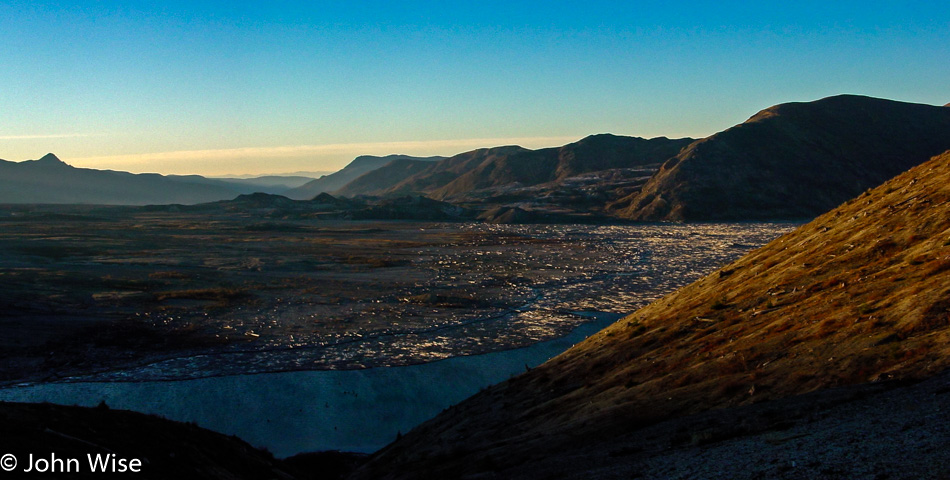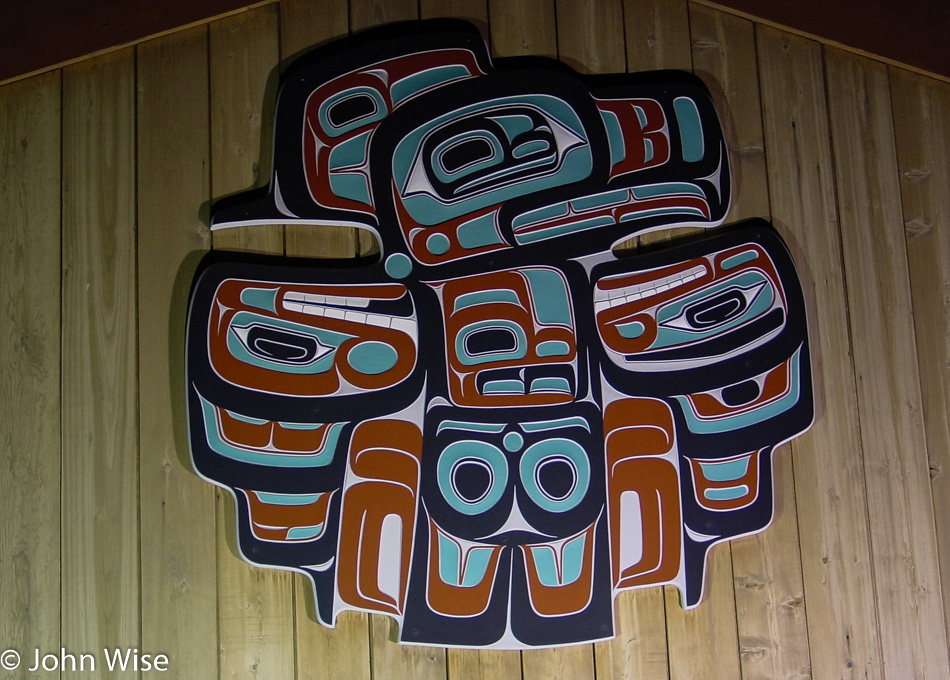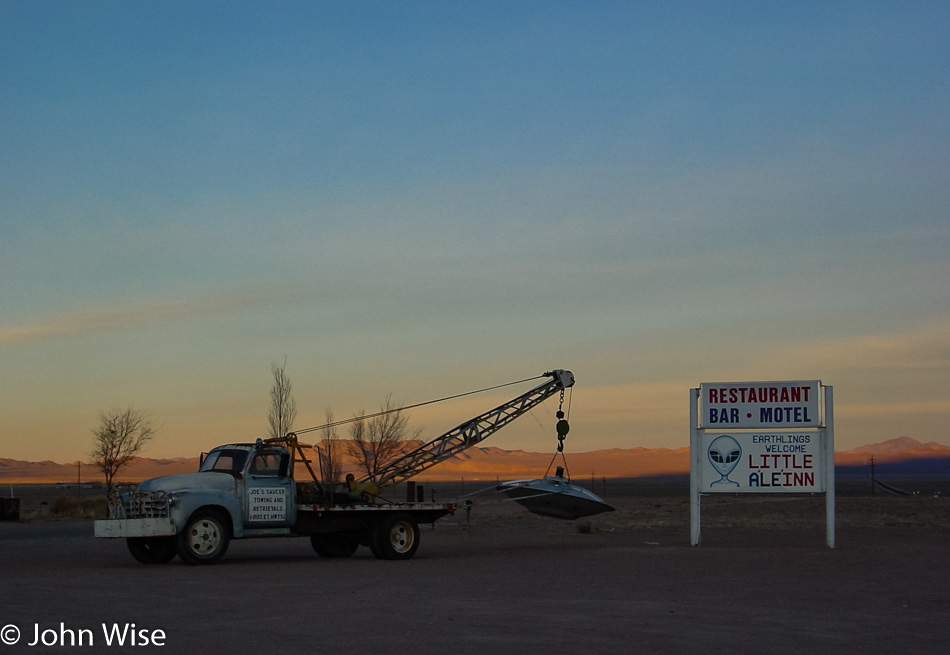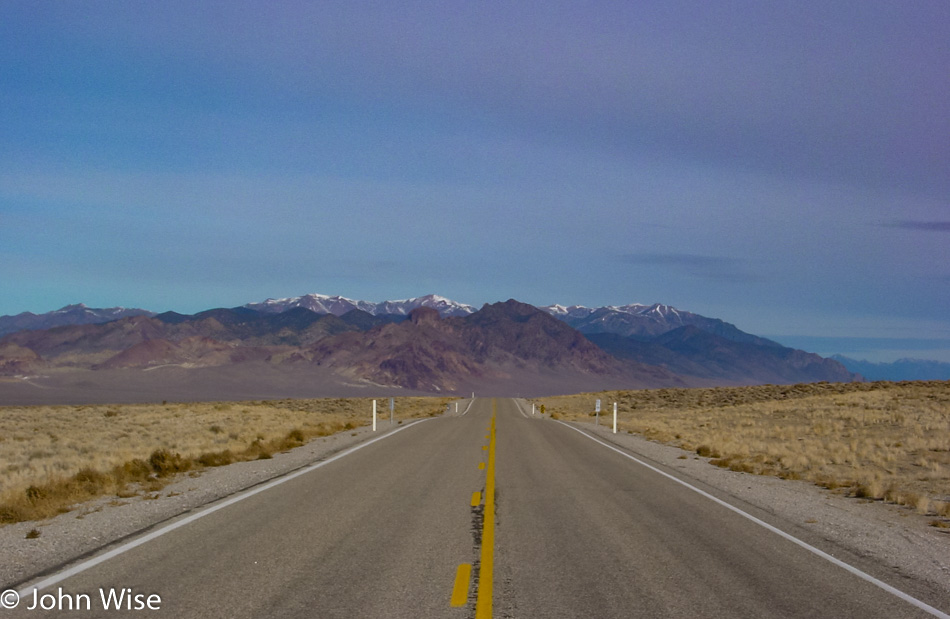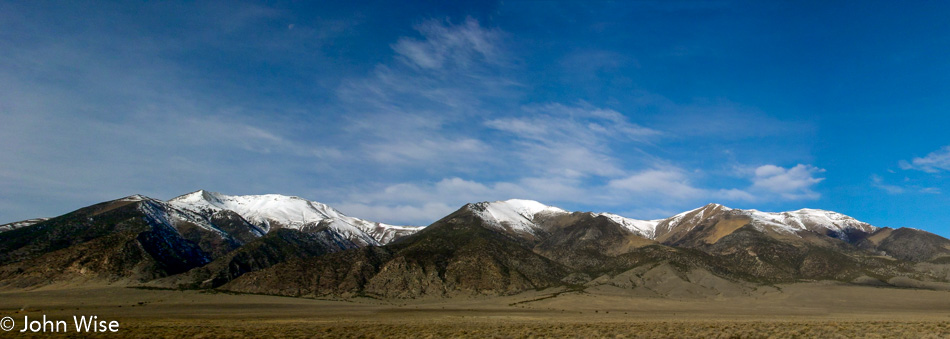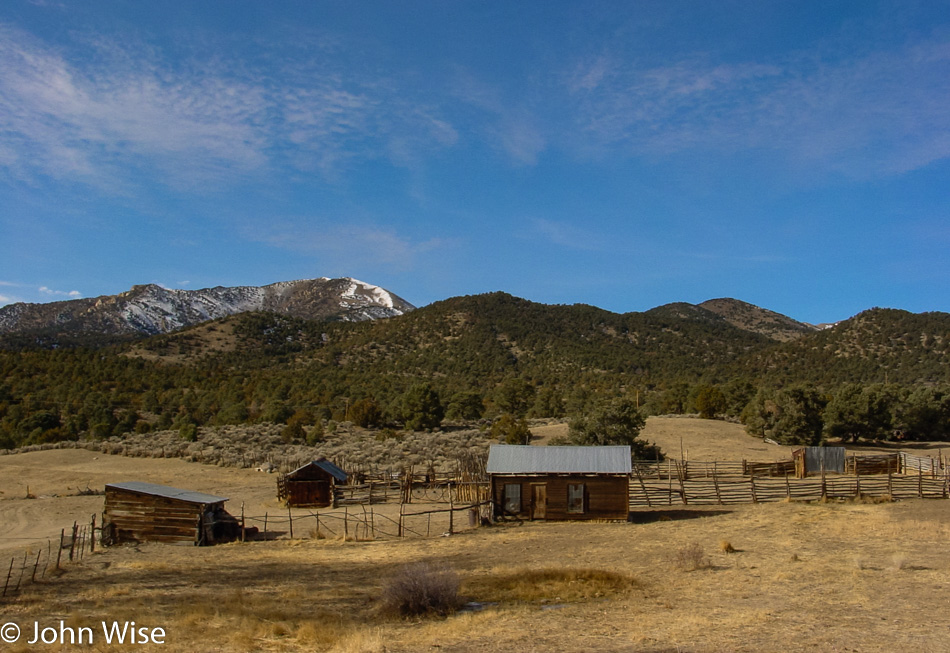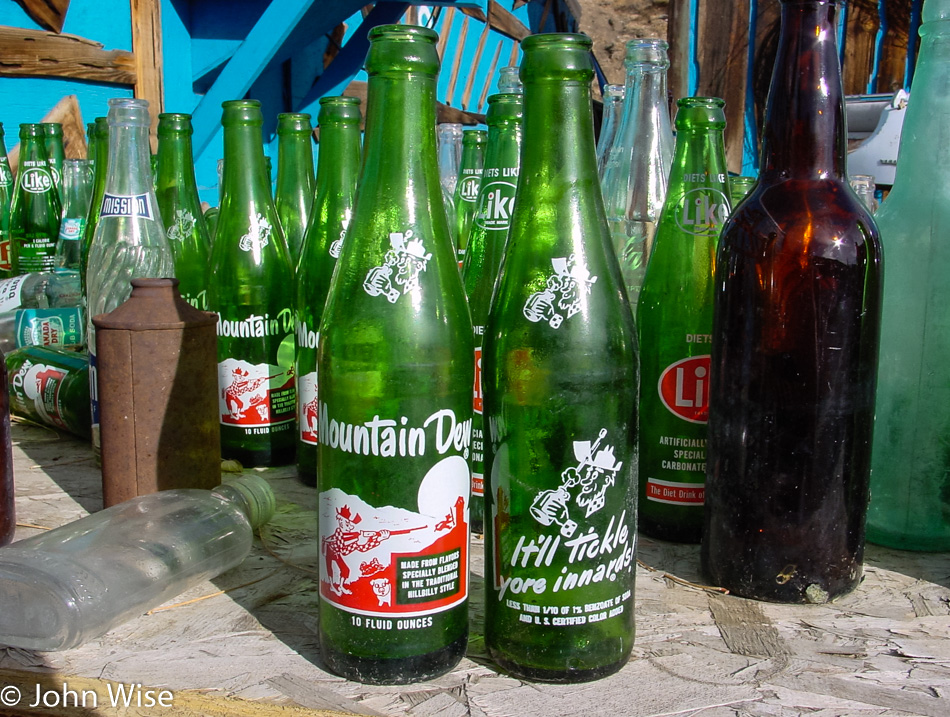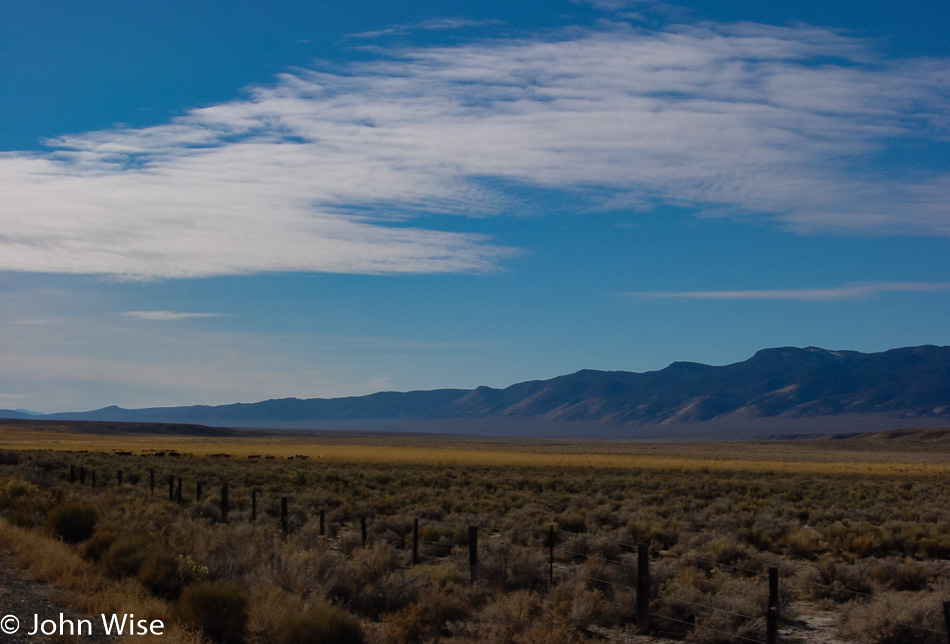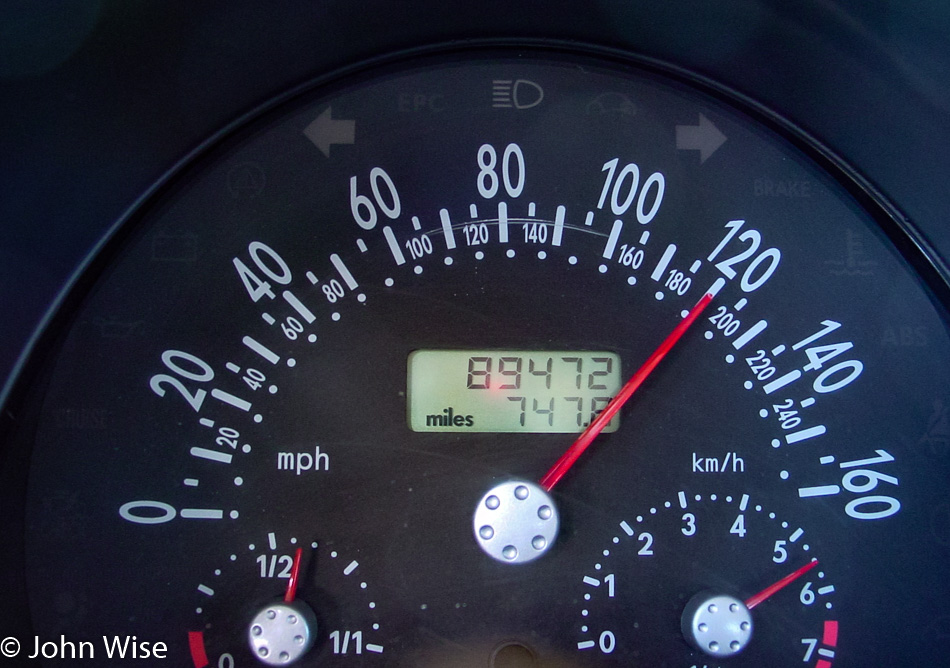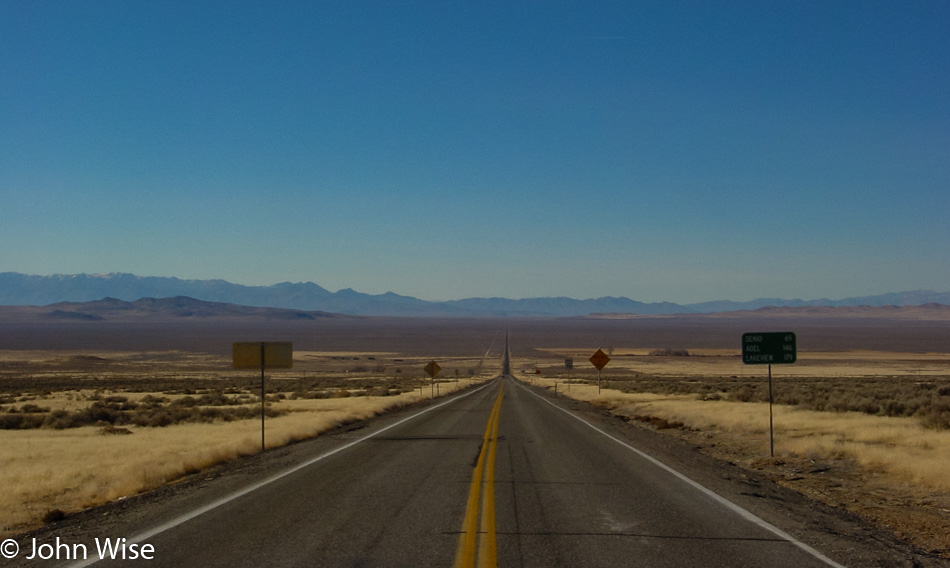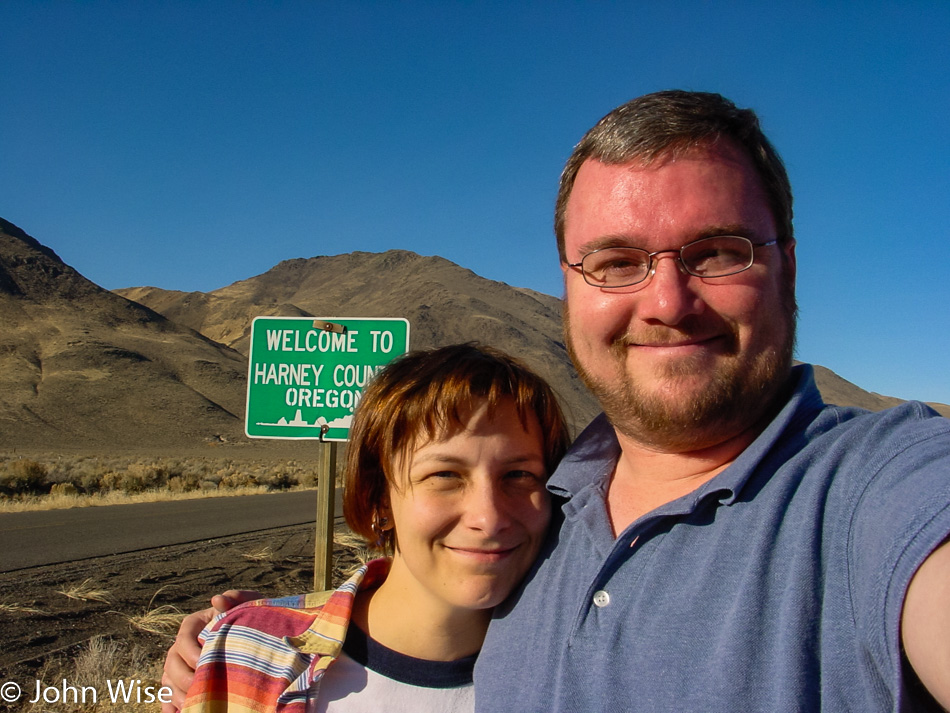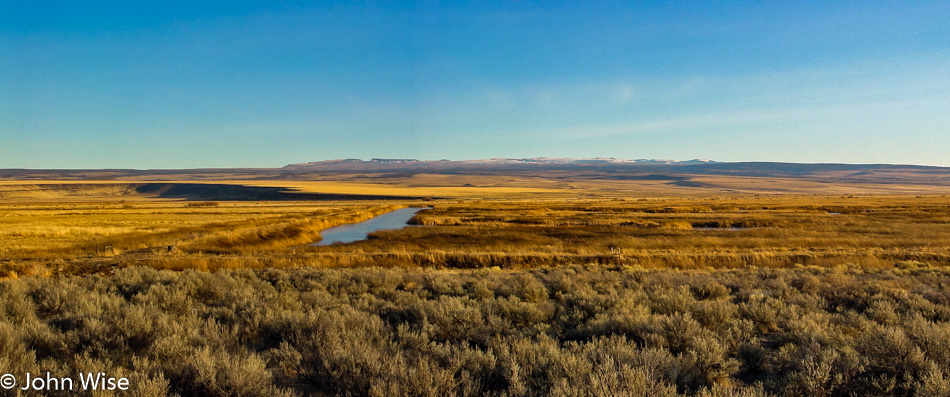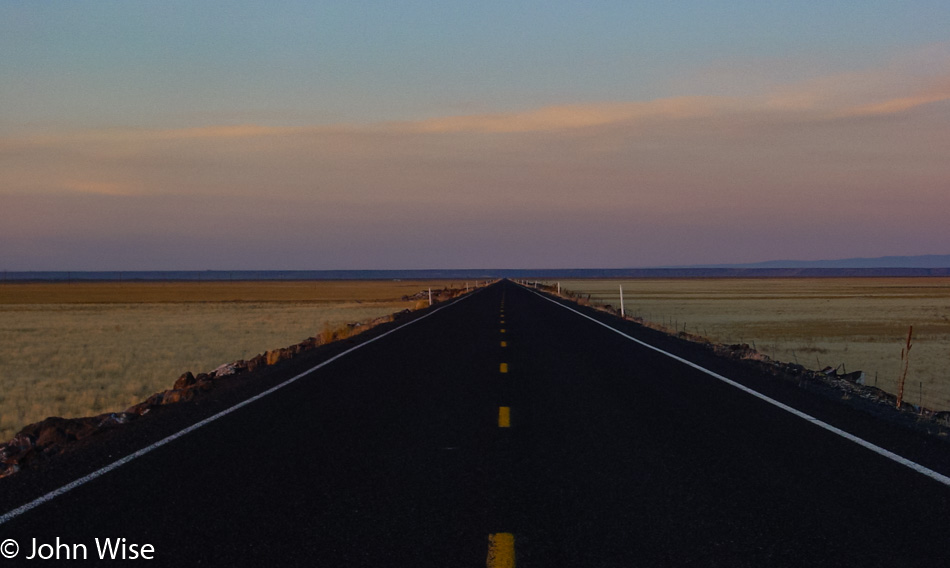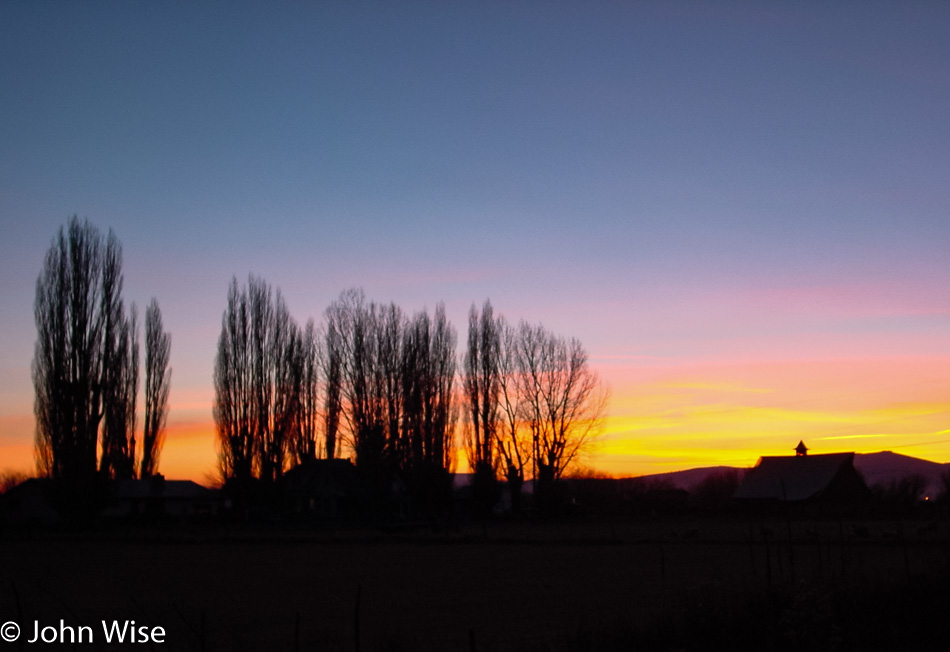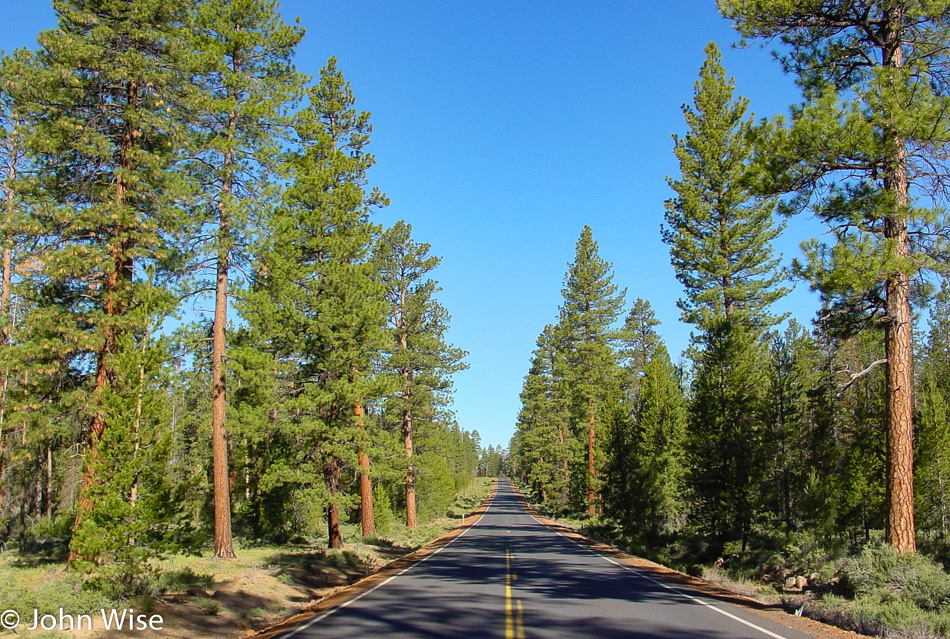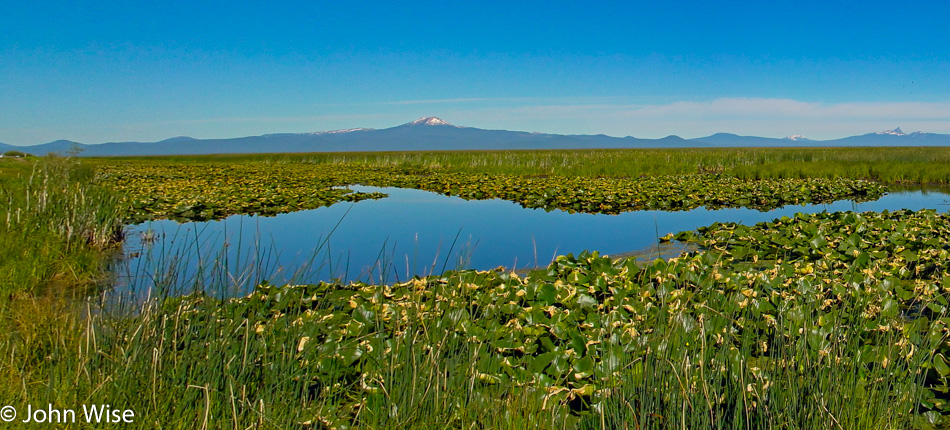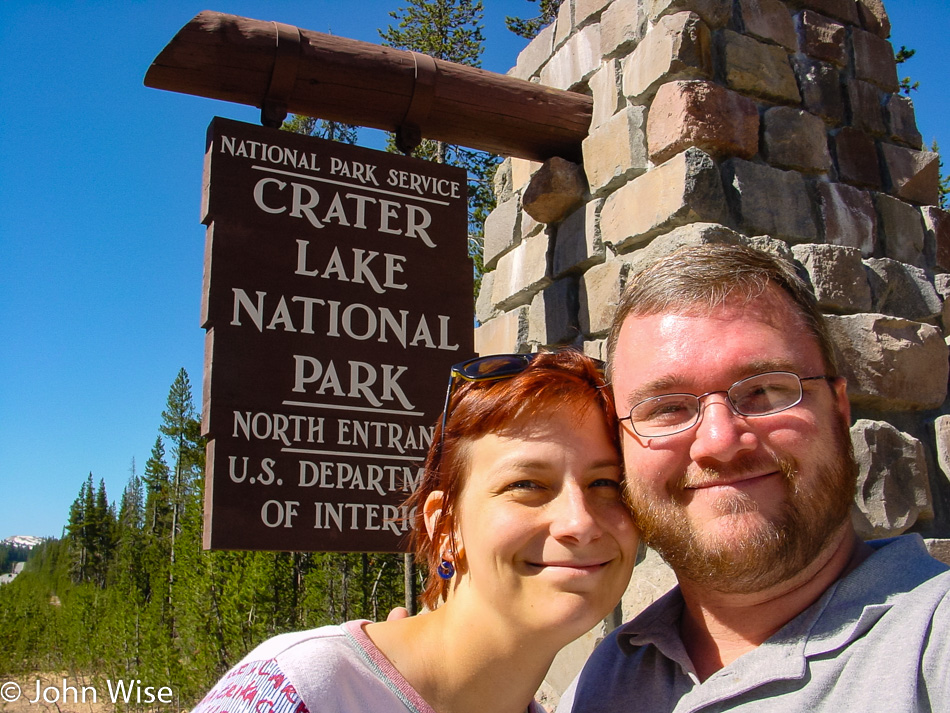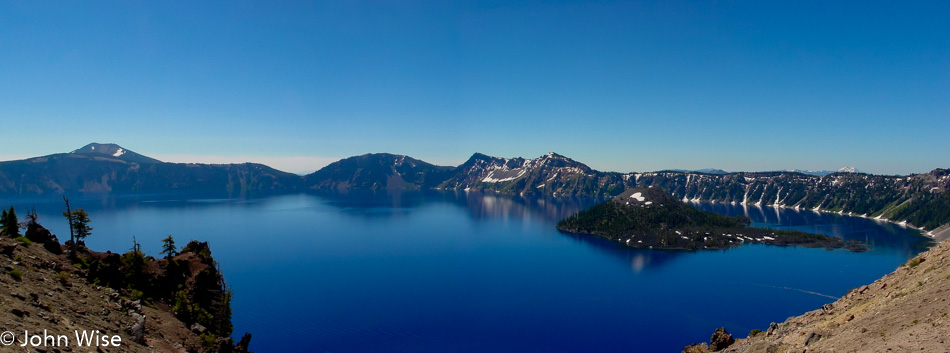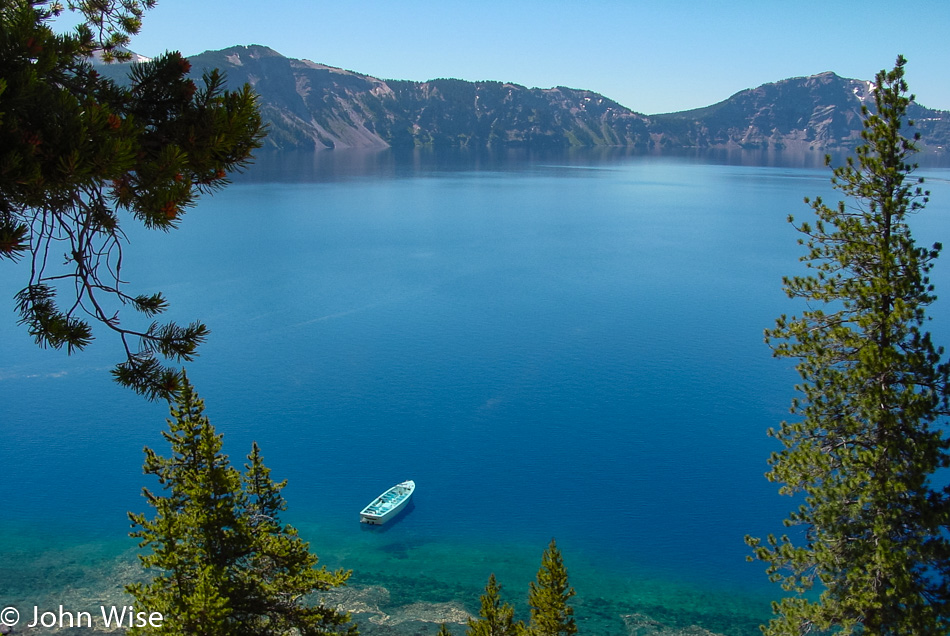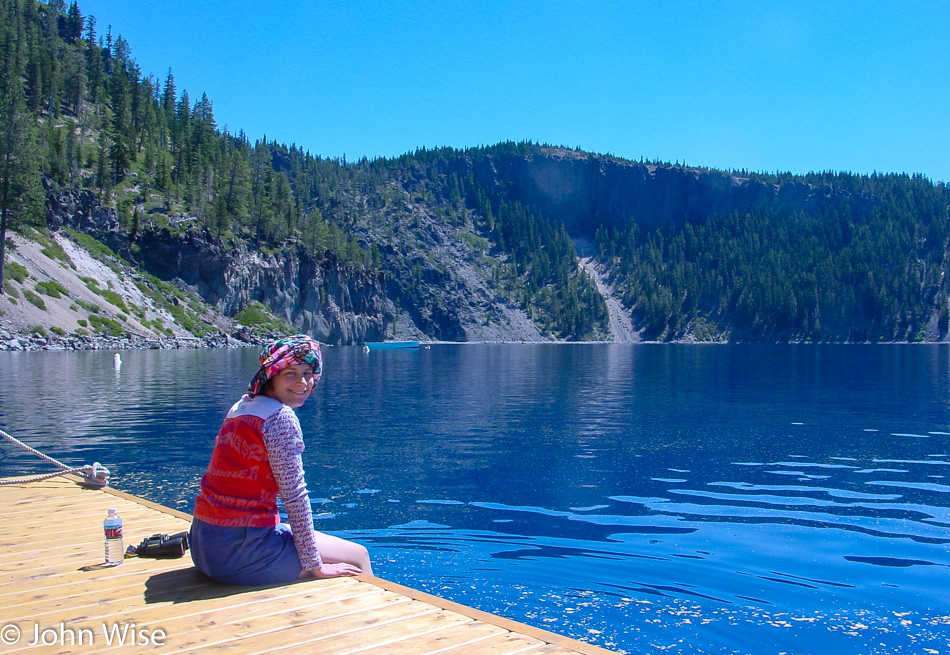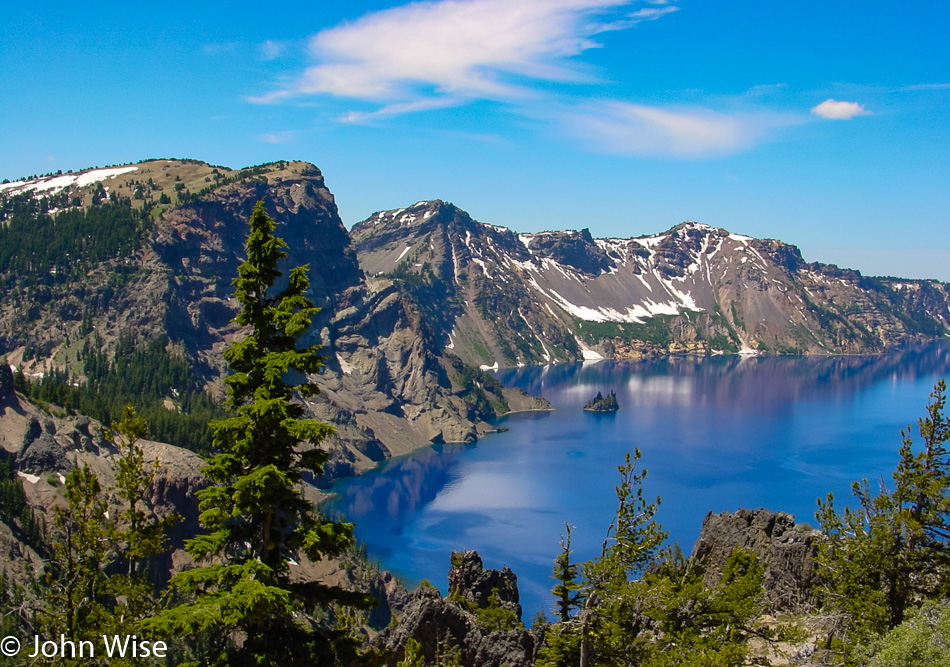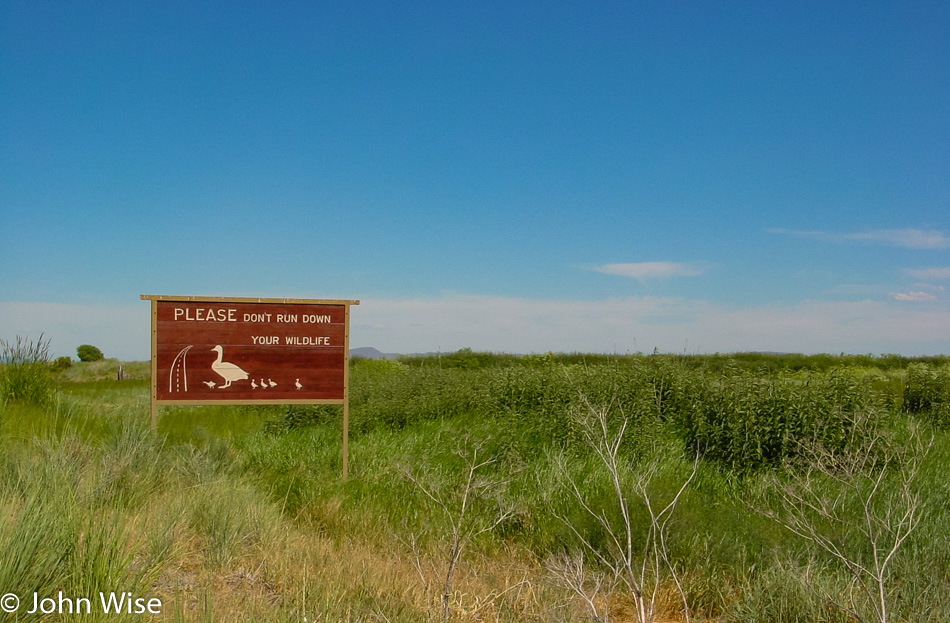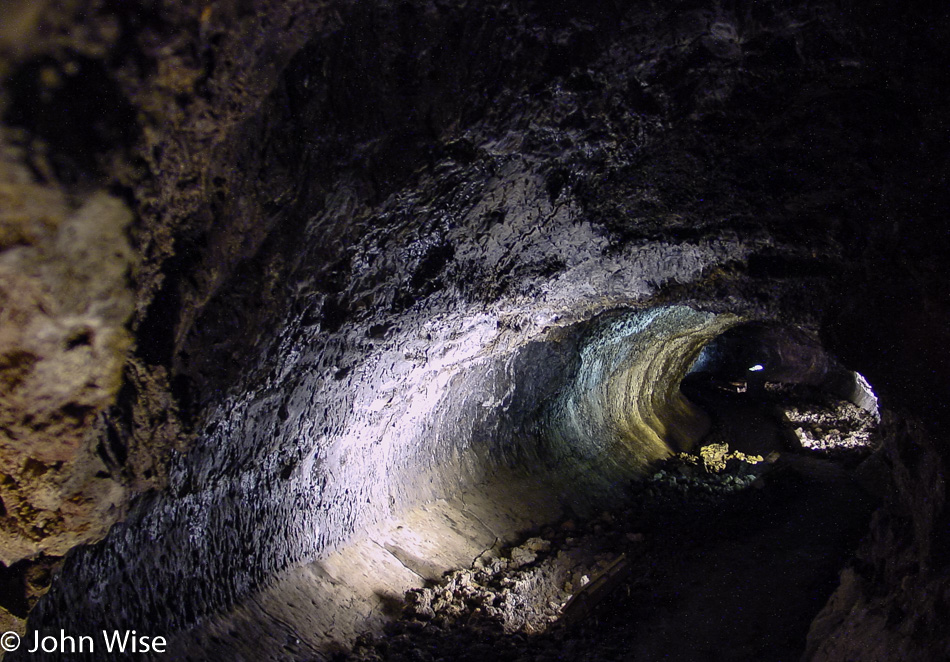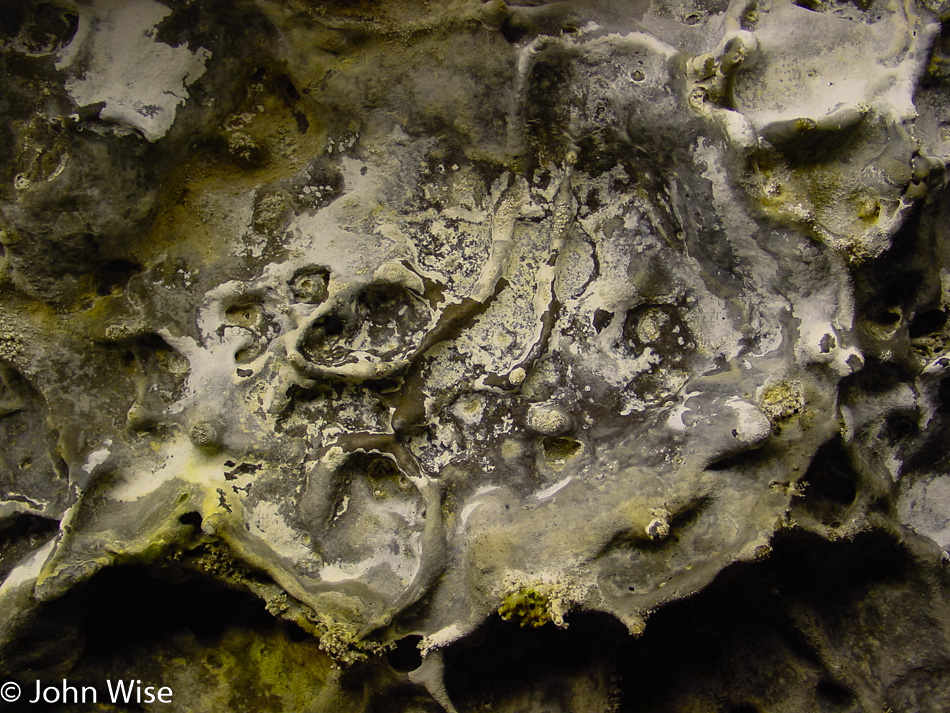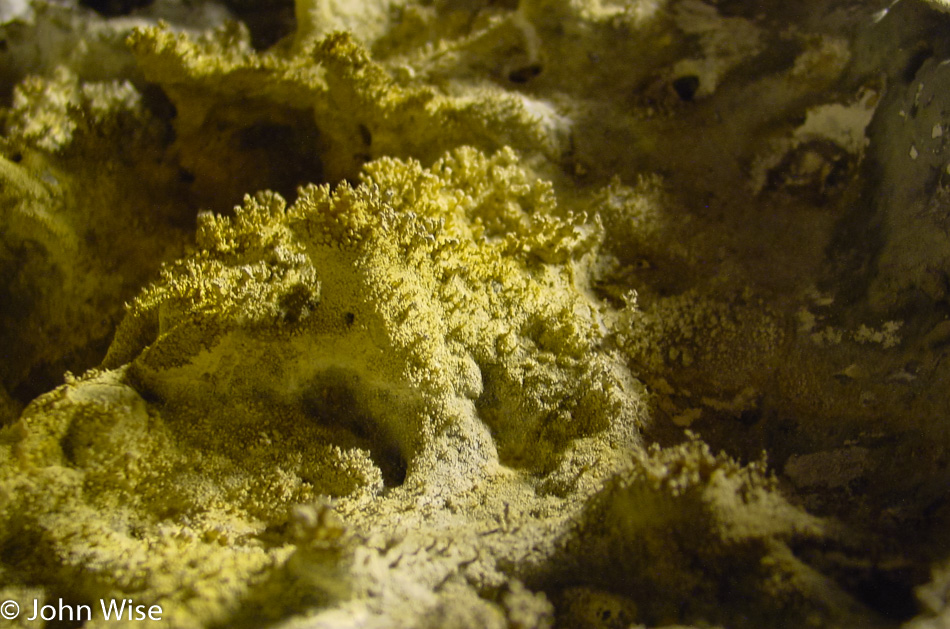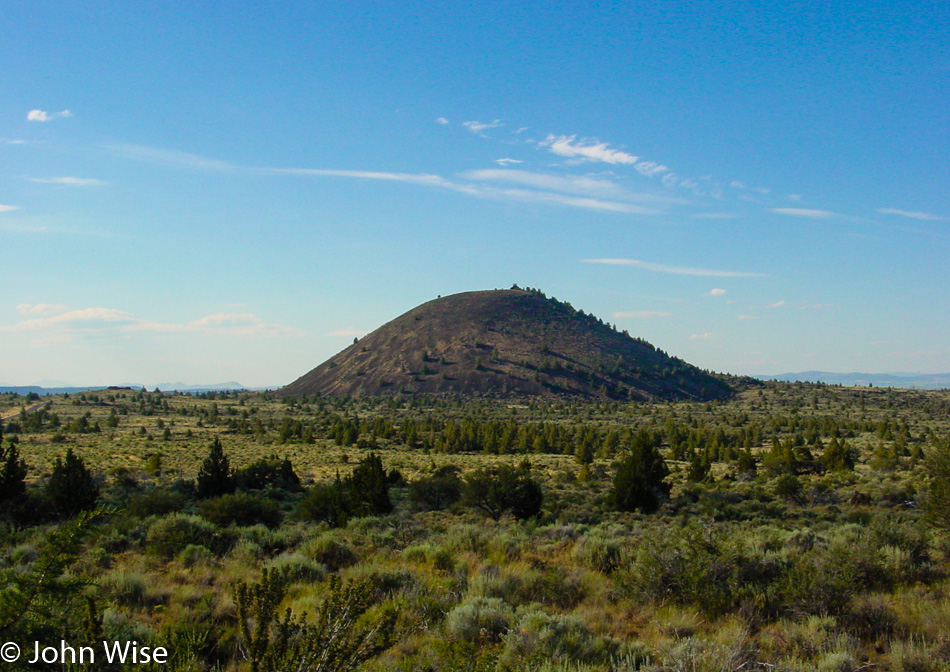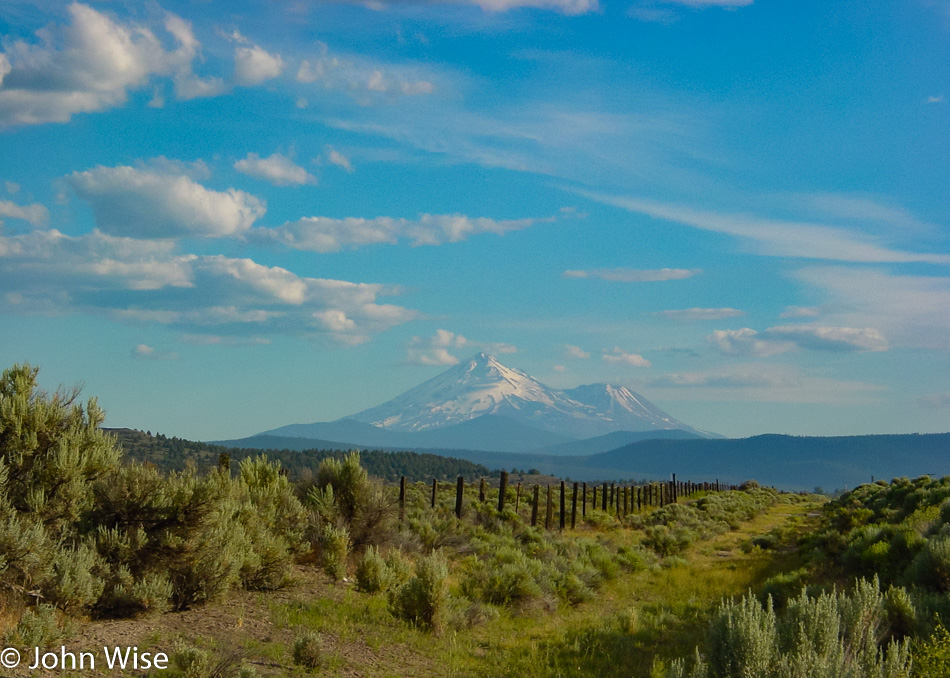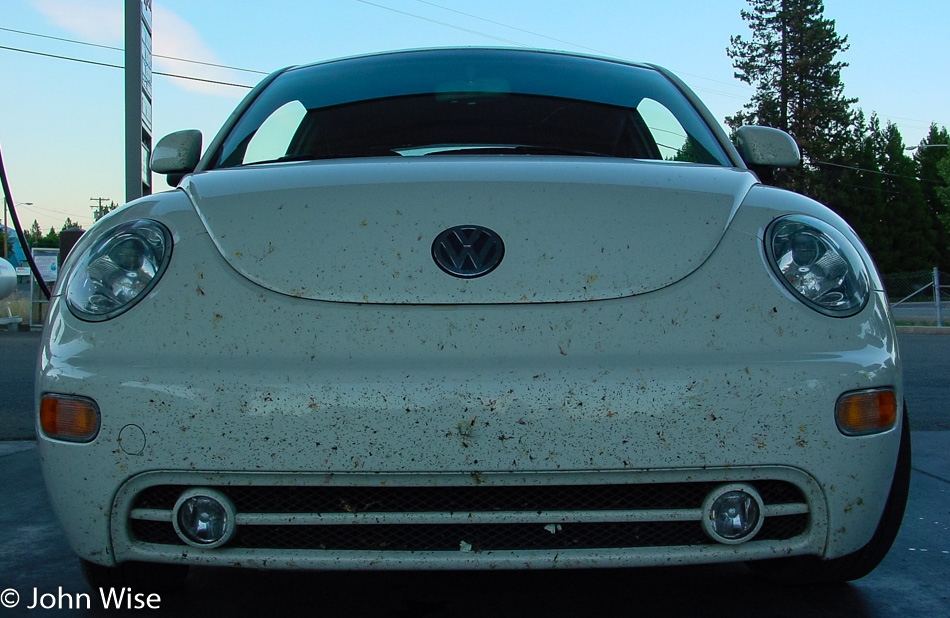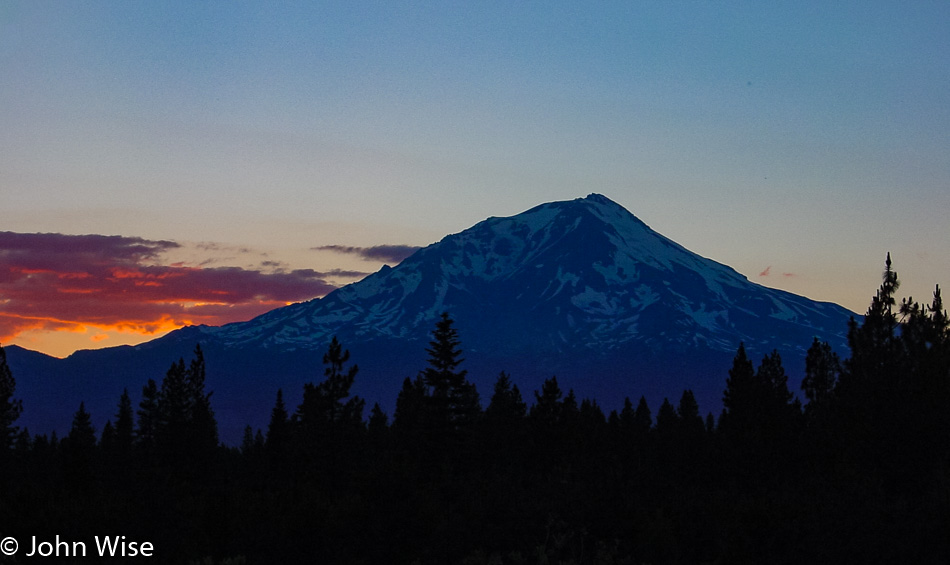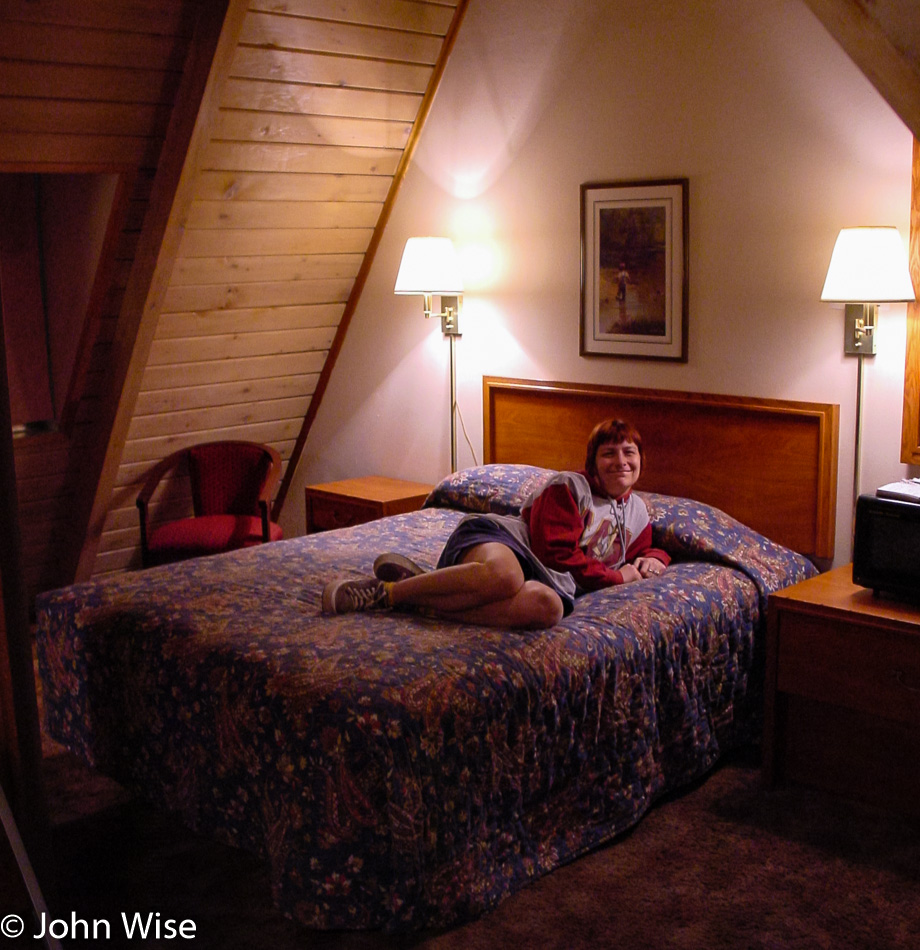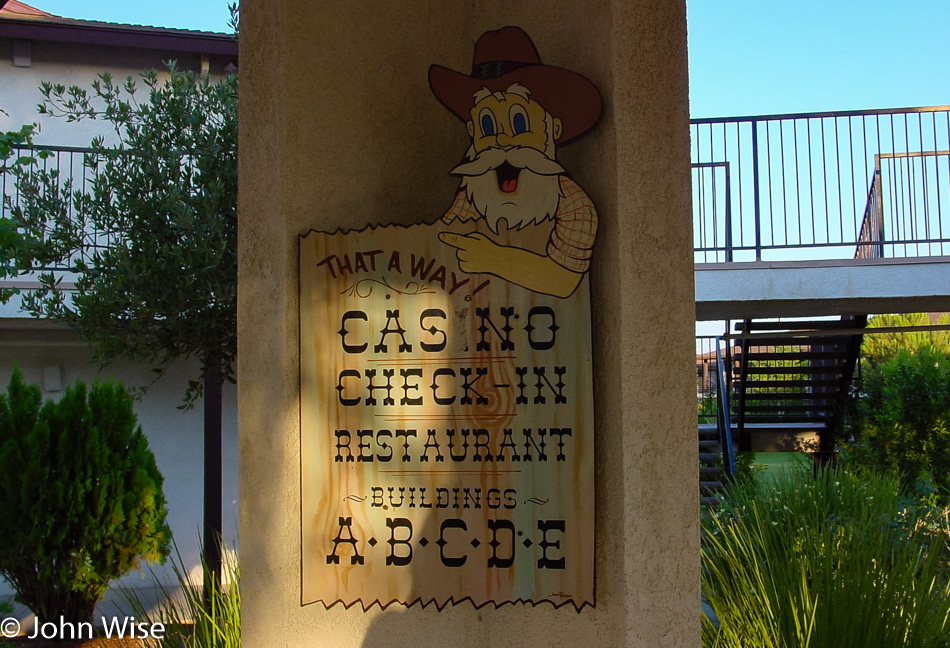
We left the Saddle West Hotel Casino RV Resort, one of two motels in town, at about 6:00 in the morning. Pahrump has a big advantage in comparison to other Nevada towns – especially those in neighboring Clark County (such as Vegas, Henderson, and Laughlin) – prostitution is legal here in Nye County; several billboards enlighten the unsuspecting (?) traveler of this fact, and there is even a brothel museum. We are probably going to come through here again on a future trip and hope to take a closer look at that. Another curiosity finds a home here in Pahrump; the radio show Coast to Coast AM hosted by Art Bell lives and operates from out this way. If you ever wondered why he opens his show with “from the kingdom of Nye” – now you know.
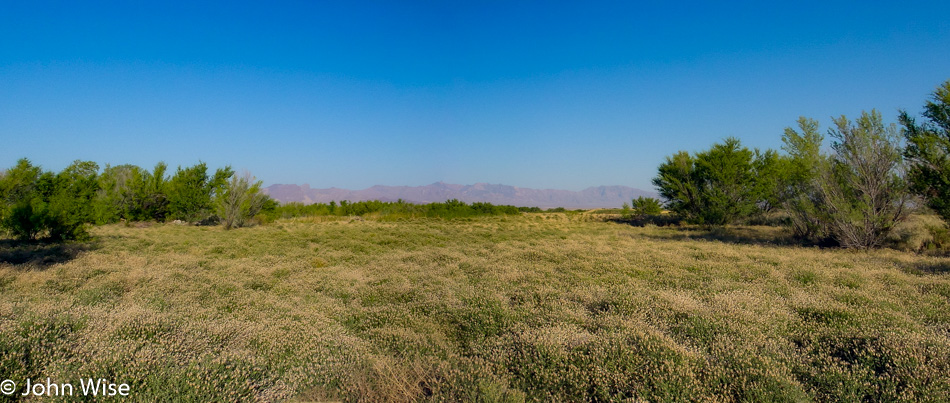
Just north of town, we turned west on Highway 190 in the direction of the California state line and Death Valley National Park, but on this side of the border lies a small exclave called Devils Hole bordering Ash Meadows National Wildlife Refuge. Naturally, we were curious and had decided to pay a visit to both. Another “Devils Something” notch on our National Park bedpost, who could resist? While a lady at a gas station effectively placed some doubt in our minds whether our Beetle could handle the unpaved road into the refuge, we also started to wonder what kind of “meadow” we could hope to find since, for several miles, we saw nothing but the usual stuff such as dry shrubs, sagebrush, and short trees. Nevada certainly managed to make it all look pretty enough and even arranged some wildlife for us: we saw several bighorn sheep standing on a hill in the distance. We eventually hit our turnoff into the refuge, although there was no sign other than “Bill Copeland Memorial Highway.” Judging from the map and the fact that we were heading for a faint cluster of greenery, we started believing that we were on the right track.
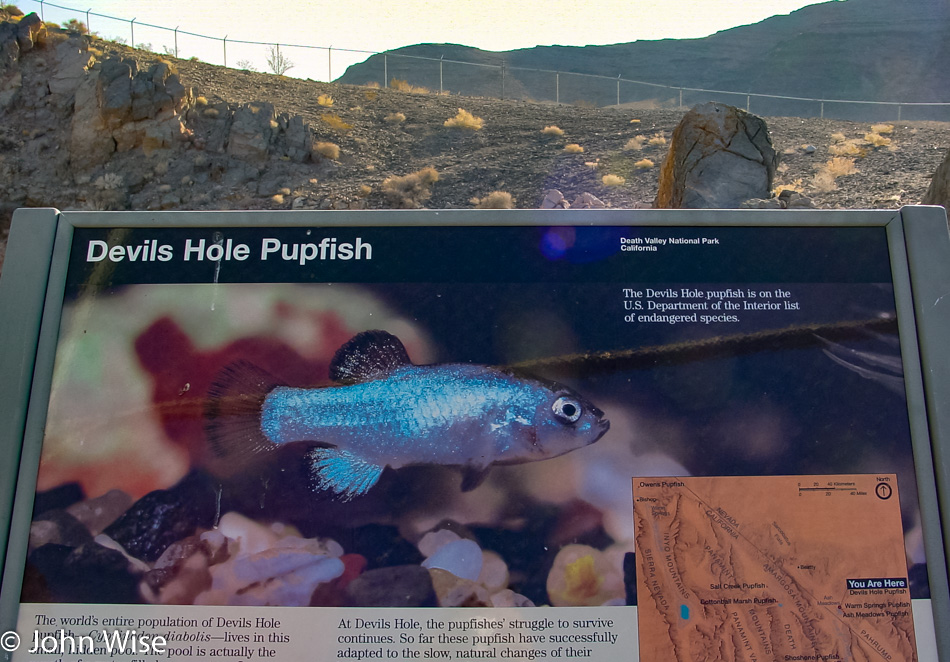
Caroline and I were beginning to have doubts about whether we would be able to access Devils Hole from our current location. We drove right by it because it was just a chain-link fenced-off area that looked like a lot of nothing. The Hole lies near the refuge’s northeastern exit, which is stocked with xeroxed info maps; that’s how we realized that a) we had just missed Devils Hole, the world’s only habitat of the Devils Hole Pupfish (clap, everybody), and b) that we hadn’t even seen the best of the Ash Meadows Refuge yet. But first, we turned around and pulled off the road next to the (closed) access road to the Devils Hole parking lot. They even discourage you from parking near the Hole. Devils Hole is not very scenic but is a rather heavily guarded scientific research area. We hung out for a short while, trying to spot one of the elusive and precious fishies in the water below us, but that proved impossible even with binoculars at the ready.
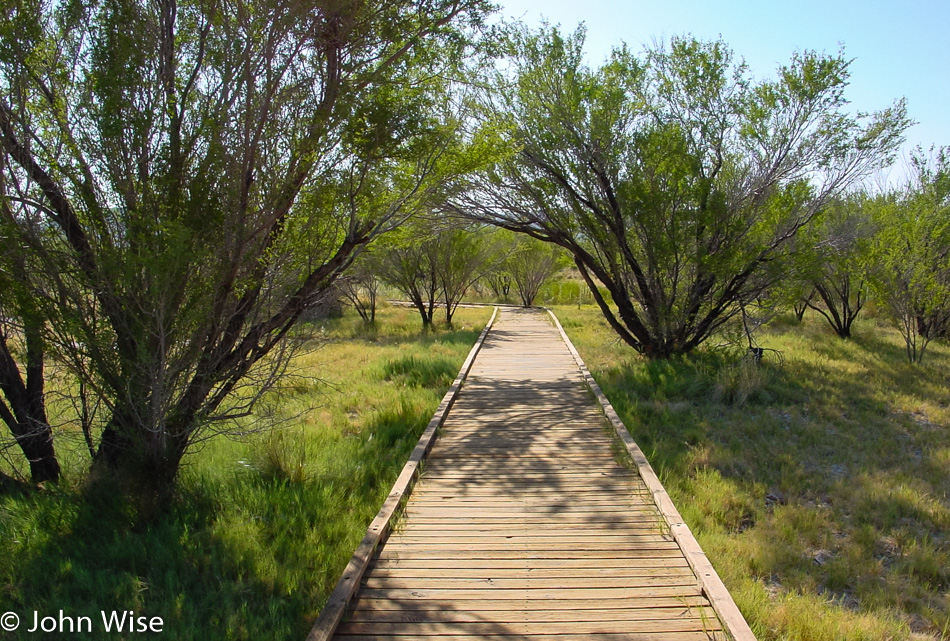
Highway 373 led us to the other side of the refuge to visit the crown jewel itself, the interpretive boardwalk to Crystal Creek Spring. The reason why there are these patches of green meadows and wetlands out here lies in the hidden groundwater.
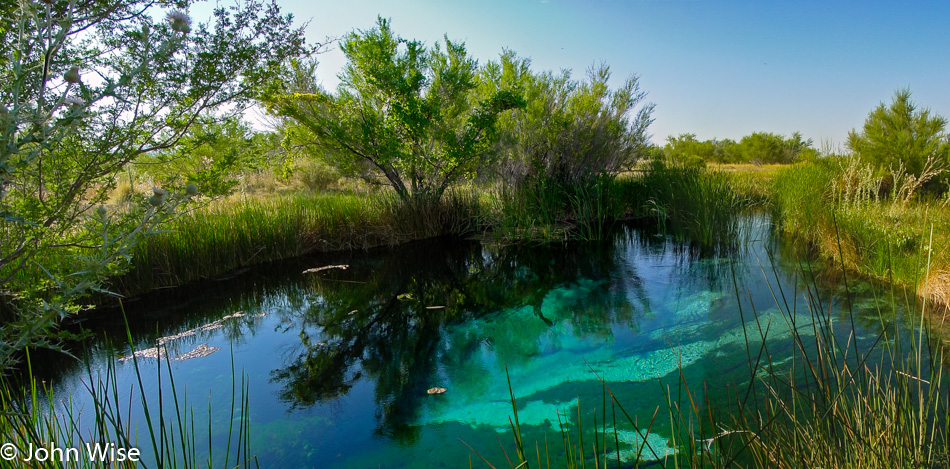
The area has a large reservoir of “fossil” water, meaning it stems from an ancient melted glacier. It surfaces in various spots in this valley, offering habitats for various kinds of – you guessed it – desert pupfish, including the Ash Meadow pupfish. These wily little fellows have the capability of surviving even in the meekest of hostile puddles. Farmers used to pump the water away from the springs, and the pupfish all but disappeared, but in recent years, the larger springs are being restored, and the pupfish are recovering. Unlike the nearly barren Devils Hole, Crystal Creek Spring is an incredible oasis, overwhelmingly beautiful, clear, and deep. You can see the pupfish swimming near the algae at the bottom with the naked eye.
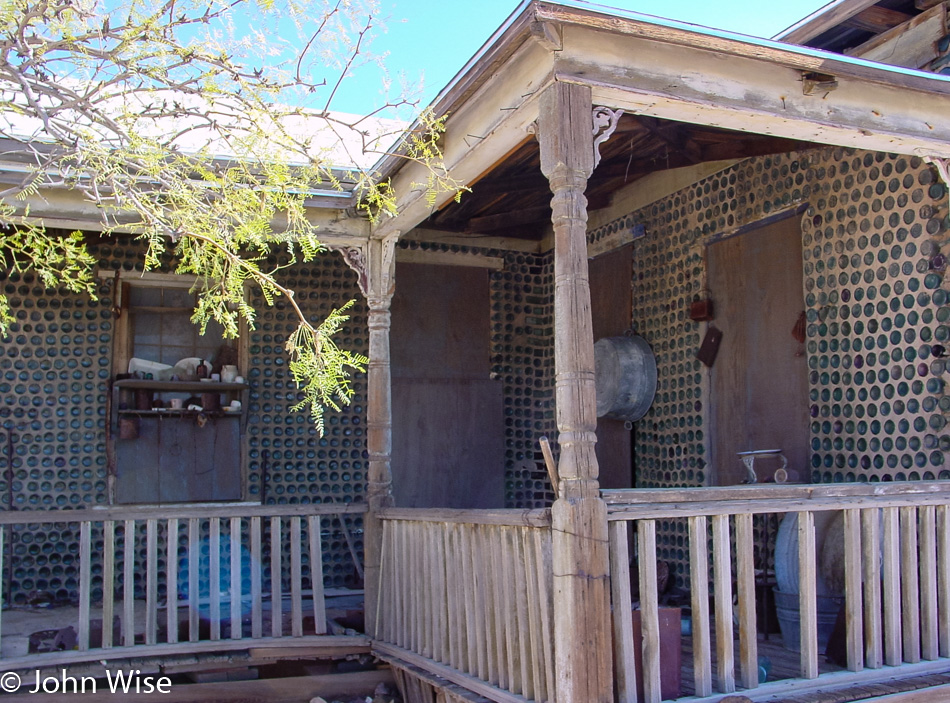
By now, it was time to jump into the Beetle again and continue on our journey. We rejoined the paved road on Highway 373 North until reaching the junction of Highway 95 West. About 40 miles further on, we passed the little town of Beatty, Nevada, and turned onto Highway 374 towards the Californian border. Four miles out of Beatty, we found Rhyolite – our next destination. In 1908, this was Nevada’s third-largest town, sprawling with over 8,000 inhabitants. Today, only a few of the brick structures remain, most of them in ruins. Rhyolite’s most interesting building is the “bottle house,” made with the help of over 10,000 bottles (mostly beer bottles of the pre-Budweiser variety). The place is in pretty good shape compared with the schoolhouse, for example.
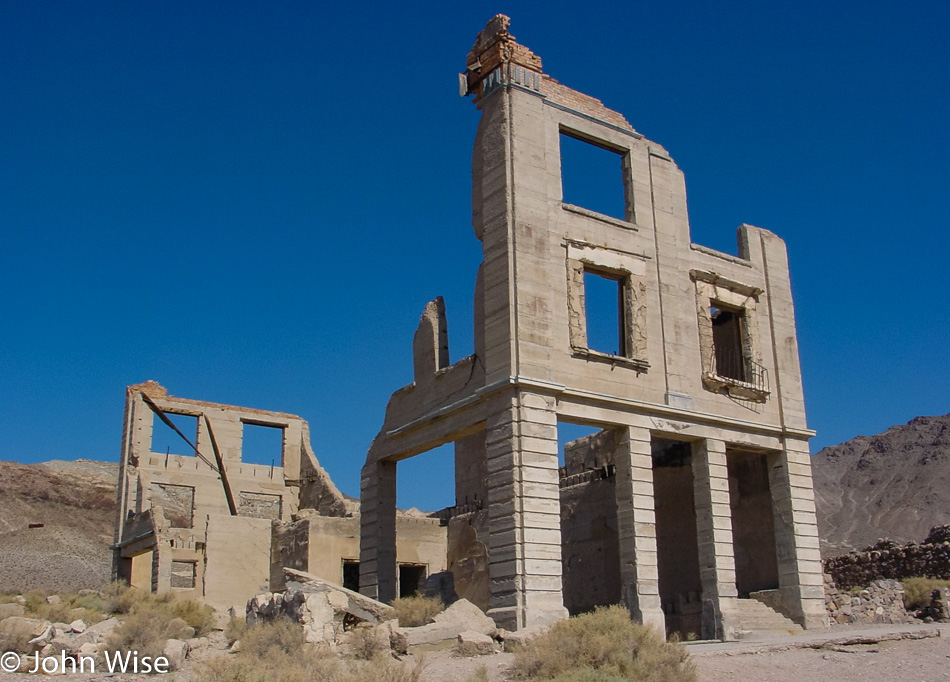
An example of one of the buildings in this ghost town that hasn’t fared well over the intervening years of neglect and lack of a population.
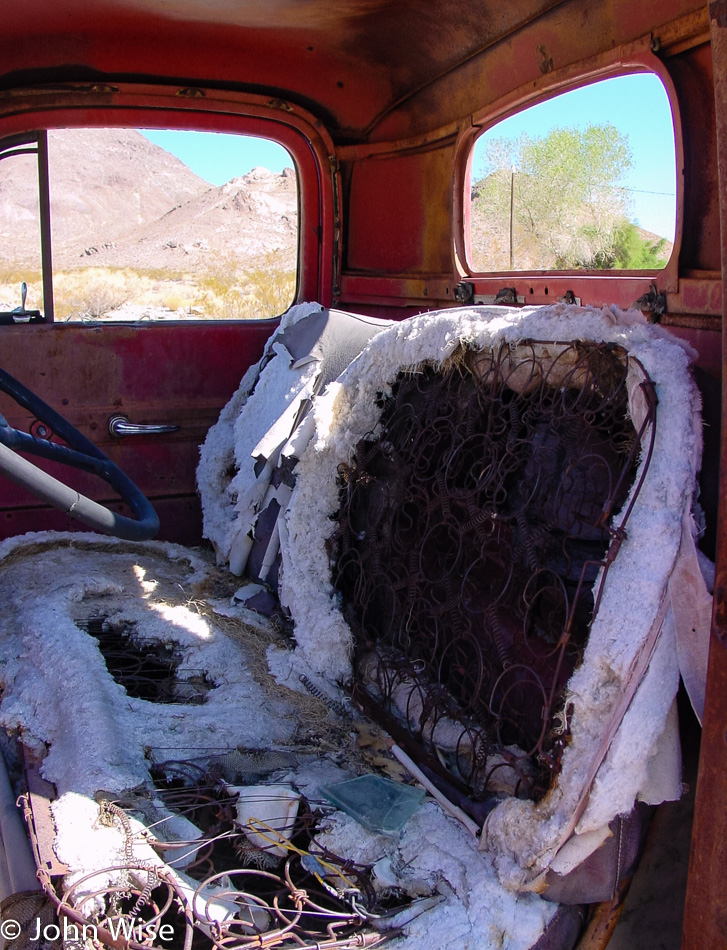
The same can be said about vehicles that were left to the elements; they likely won’t be driven again any time soon.
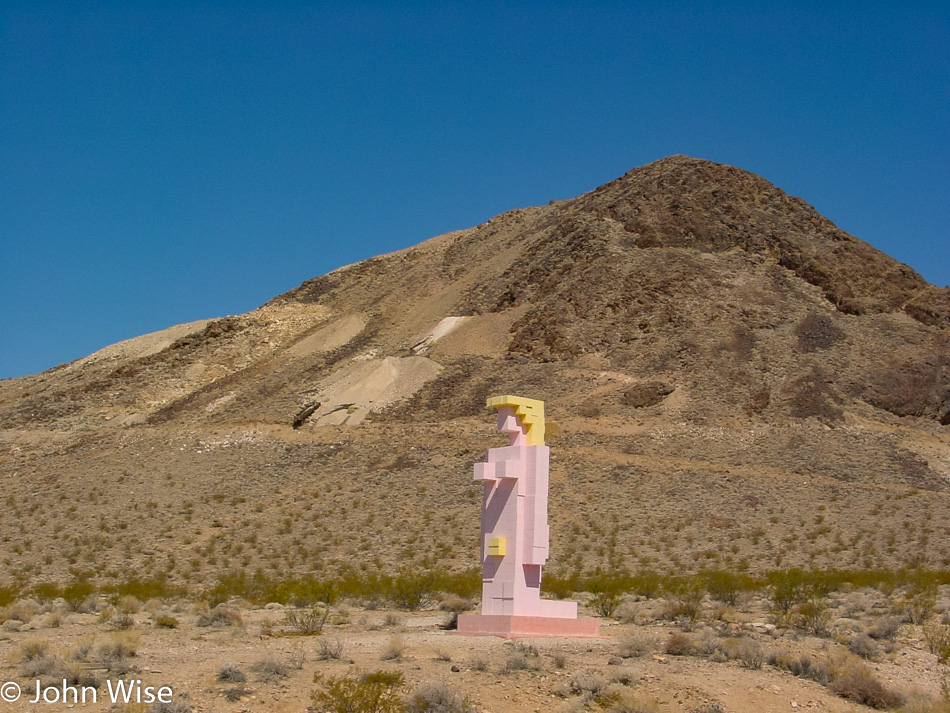
Just next to the Rhyolite townsite (in the suburbs, so to speak) lies an outdoor art exhibit of a curious kind – the Goldwell Open Air Museum, a project of the late Belgian artist Albert Szukalski (1945-2000). He founded the museum in 1984 with his sculpture “The Last Supper,” and later on, several other sculptures by various and distinguished artists were added, such as the true blond above. A truly unique art experience that has been seen by millions of visitors on their way to Rhyolite.
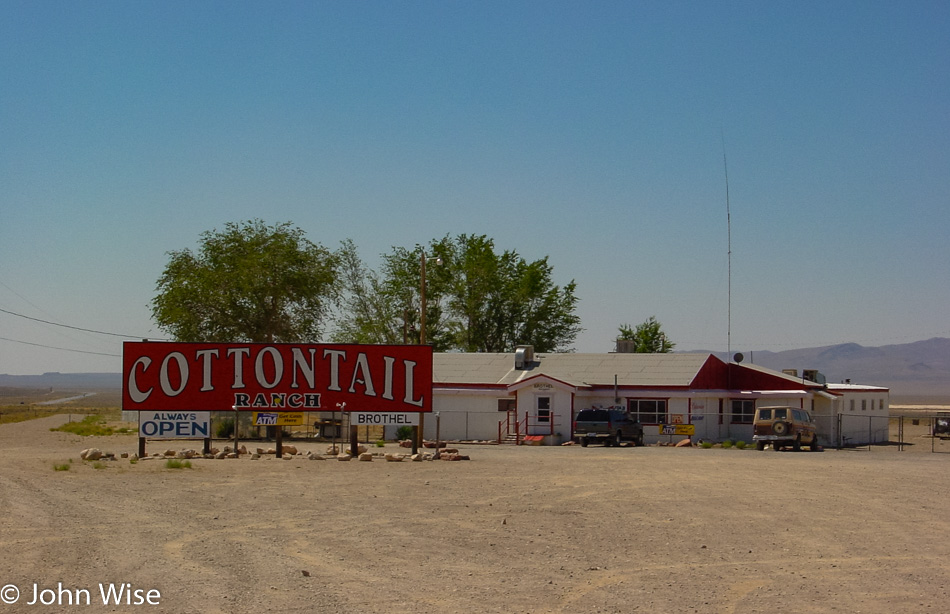
Finally, we headed back towards Beatty, where we stopped for gas, postcards, and the loo. On the way out of our pit stop, we saw a sign offering “free police car rides.” Unfortunately, only for shoplifters; what a drag. Near the Esmeralda County line but still in Nye, we passed another example of the kind of business that Nevada is famous for, and I’m not talking about casinos. For some reason, these establishments are usually called “So-and-so Ranch,” although, in reality, the buildings resemble double-wide trailers. Anyway, in case you ever asked yourself what a brothel in the middle of nowhere looks like, wonder no more.
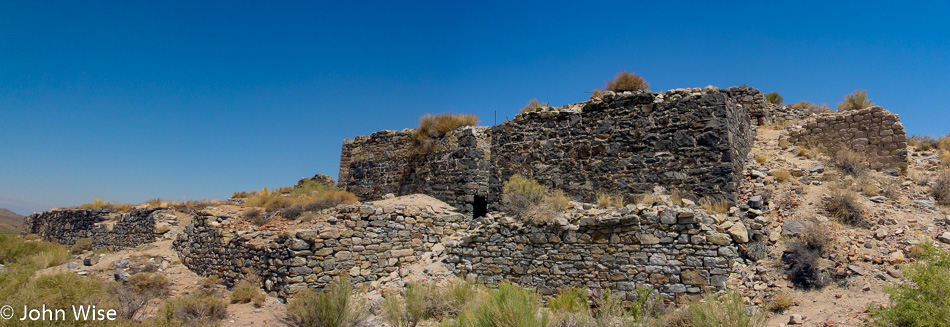
The road had started to climb higher and the surroundings became a tad greener and then dipped again for another encounter with the lovely sagebrush, especially true when it is fresh and fragrant. We are looking at a small corner of Palmetto, Nevada. Founded in the early 1860s after silver was found in the area, the town went through not one but two revivals, only to disappear for good during its last downturn. It was named after the local Joshua trees which the settlers thought were related to palm trees. A few miles past Palmetto, we spotted a few bighorn sheep; unfortunately, there was no chance to pull over for a picture.
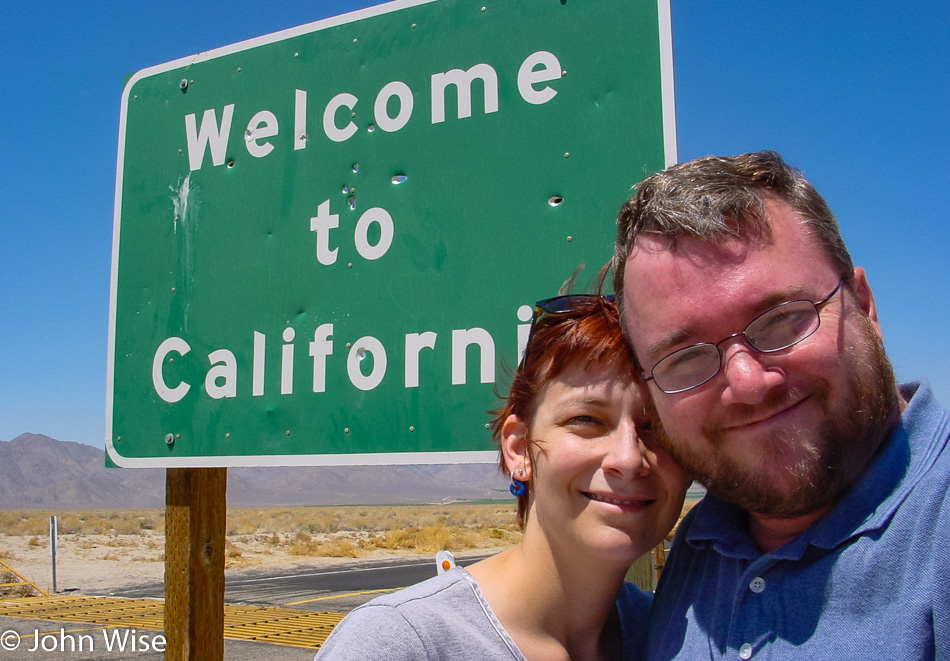
Back in California for only about 10 miles before swinging back into Nevada. While we have now passed through Oasis, California, we can’t tell you much about it.
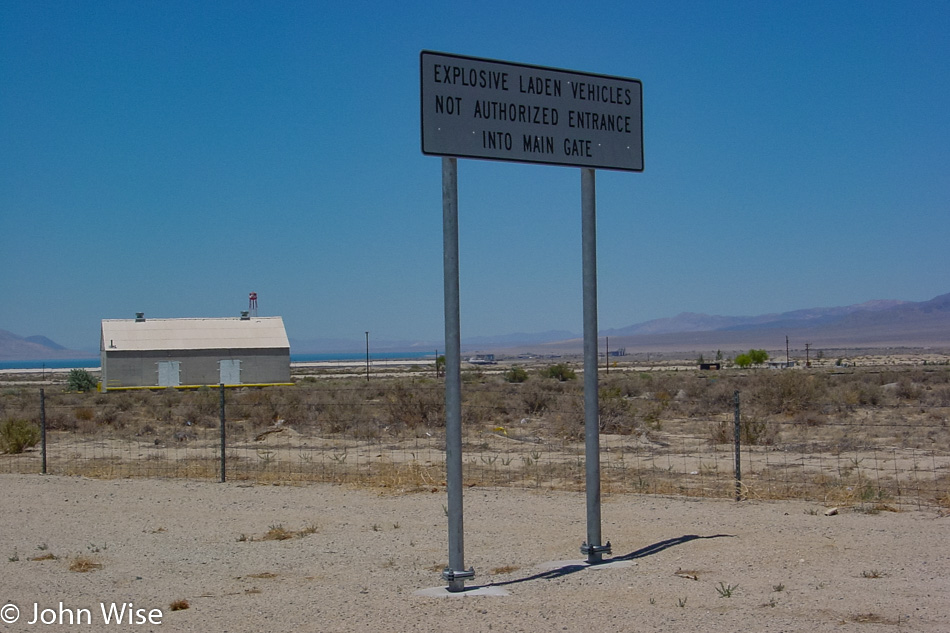
Where the heck are we where people have to be warned about not bringing their explosives-laden vehicles through the main gate? This is obviously not Disneyland.
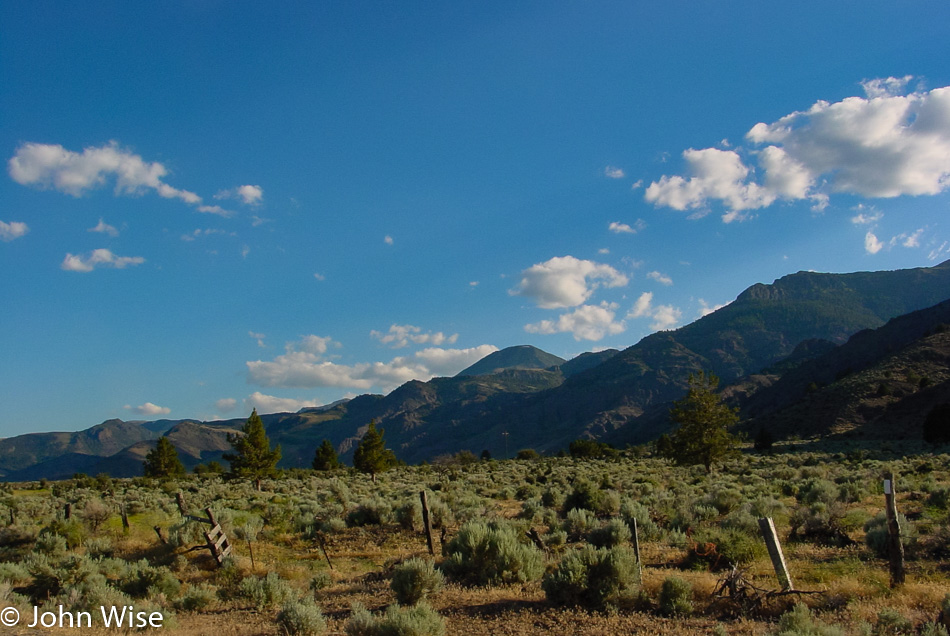
Mountains and sagebrush are not a bad combo.
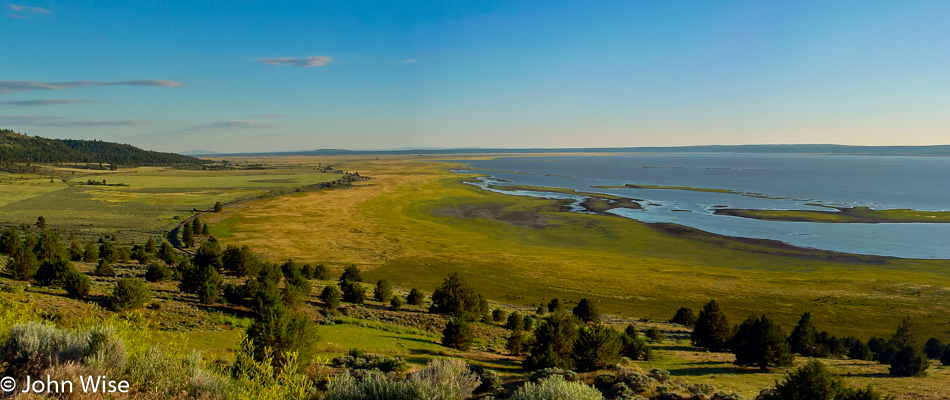
We needed to dig into some driving as the day was quickly getting away from us since we had spent a fair share of our time checking stuff out, but this scene was too pretty to let pass. We are on the road passing through Nixon in rural western Nevada, looking out over Pyramid Lake. A bit further up the road, we’ll encounter Gerlach, Nevada, and remain on state route 447 until we return to California on our way toward Cedarville and points beyond.
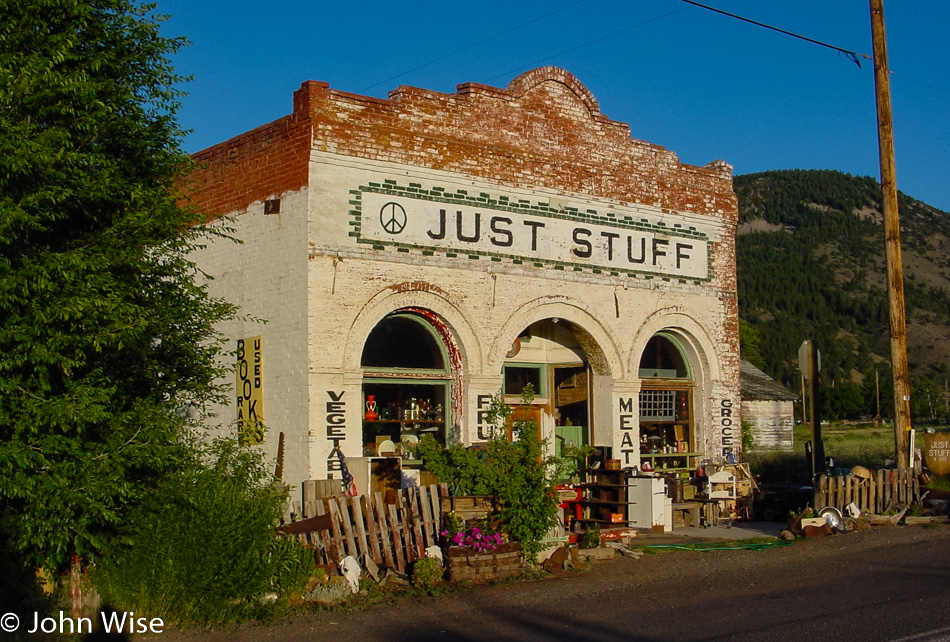
This is Just Stuff and is a place for a bit of all things, including souvenirs, because once you enter Pine Creek on the Oregon border, the first thing you are likely needing to do is shop in a little funky joint to jump right into the Oregon vibe.
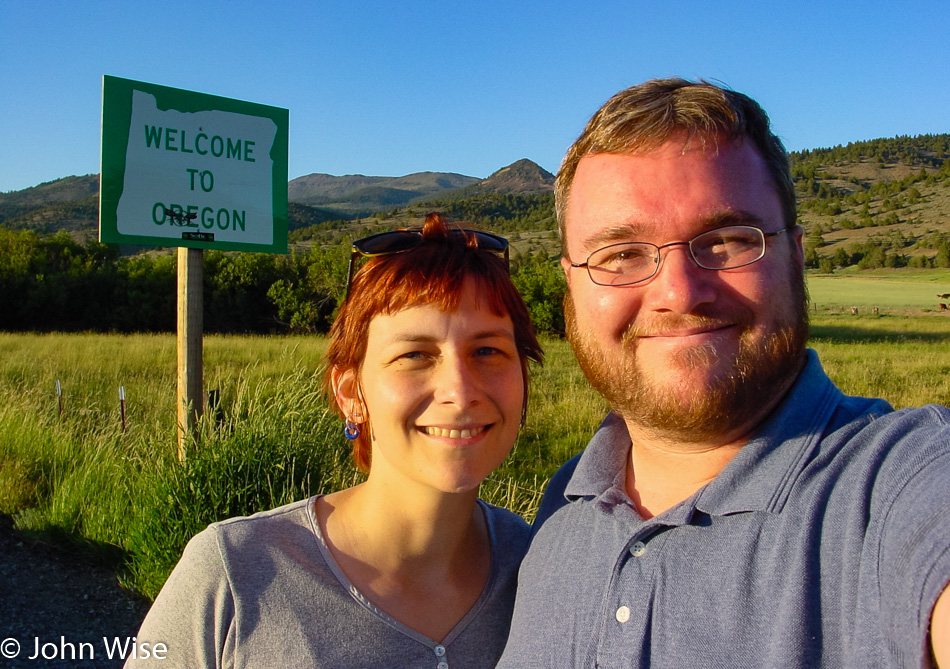
This is our second time this year and the second time in our lives that we are visiting Oregon. The first time this past March, we crossed over an eastern border of the state; this time, it’s a southern border. If you believe you are starting to see a trend, you’d not be mistaken. I can nearly assure you that it’s only a short matter of time before we enter the state over on the southwest side to take in Coastal Oregon from that perspective.
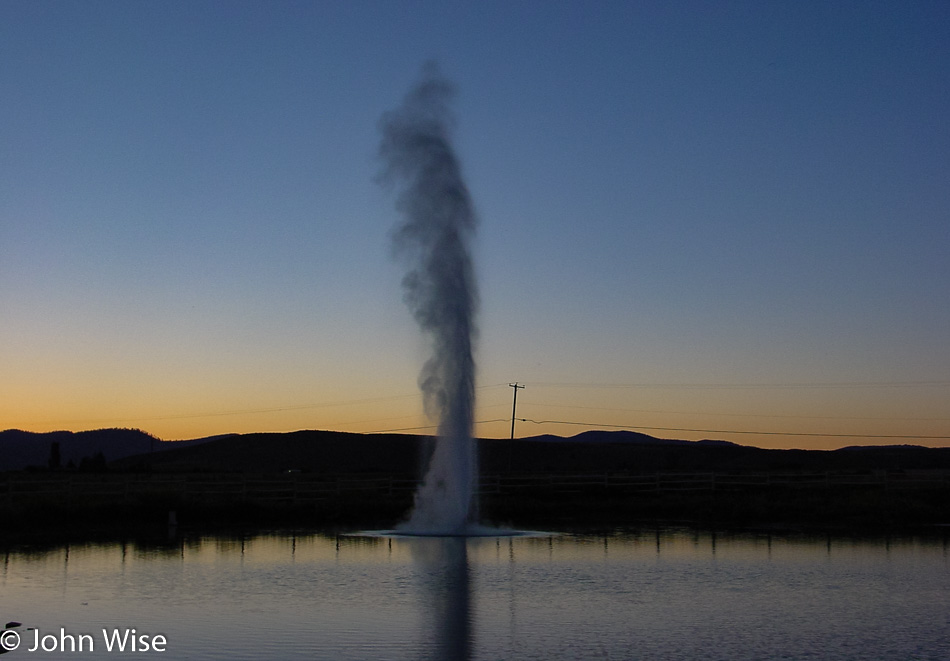
Is it a real geyser? Who cares? It’s pretty and reliable.
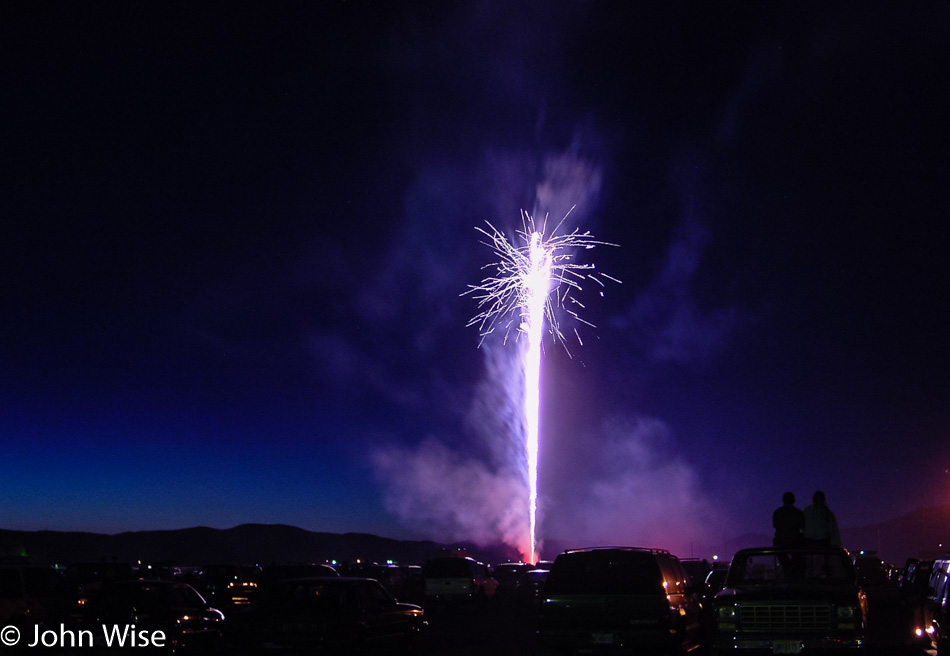
This single rocket on the Fourth of July is why we’ve driven nearly 1,000 miles to Lakeview, Oregon. Sitting on top of trucks and in lawn chairs like we’re at the drive-in in rural America is what the celebration of freedom is all about. Happy birthday, America!
